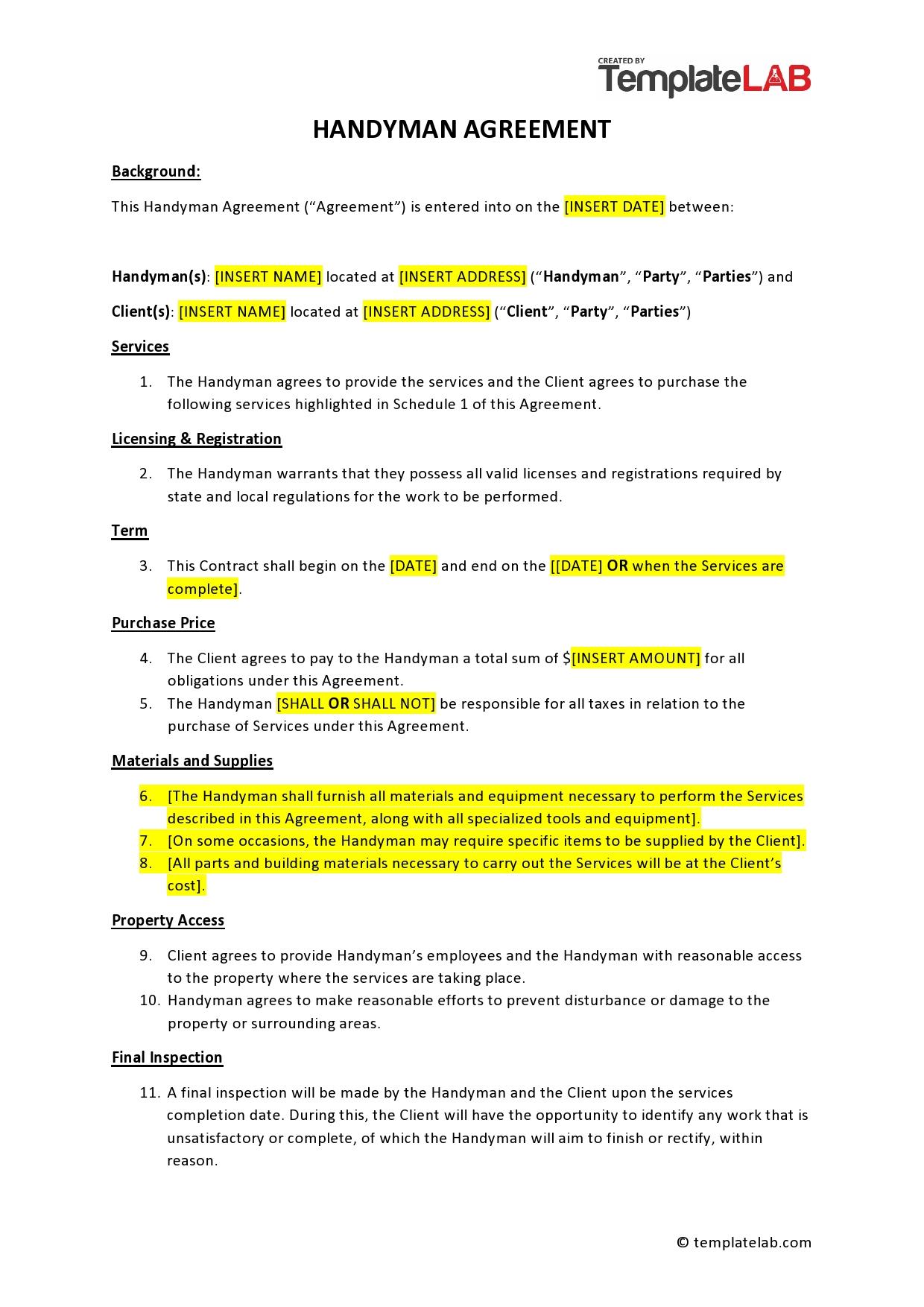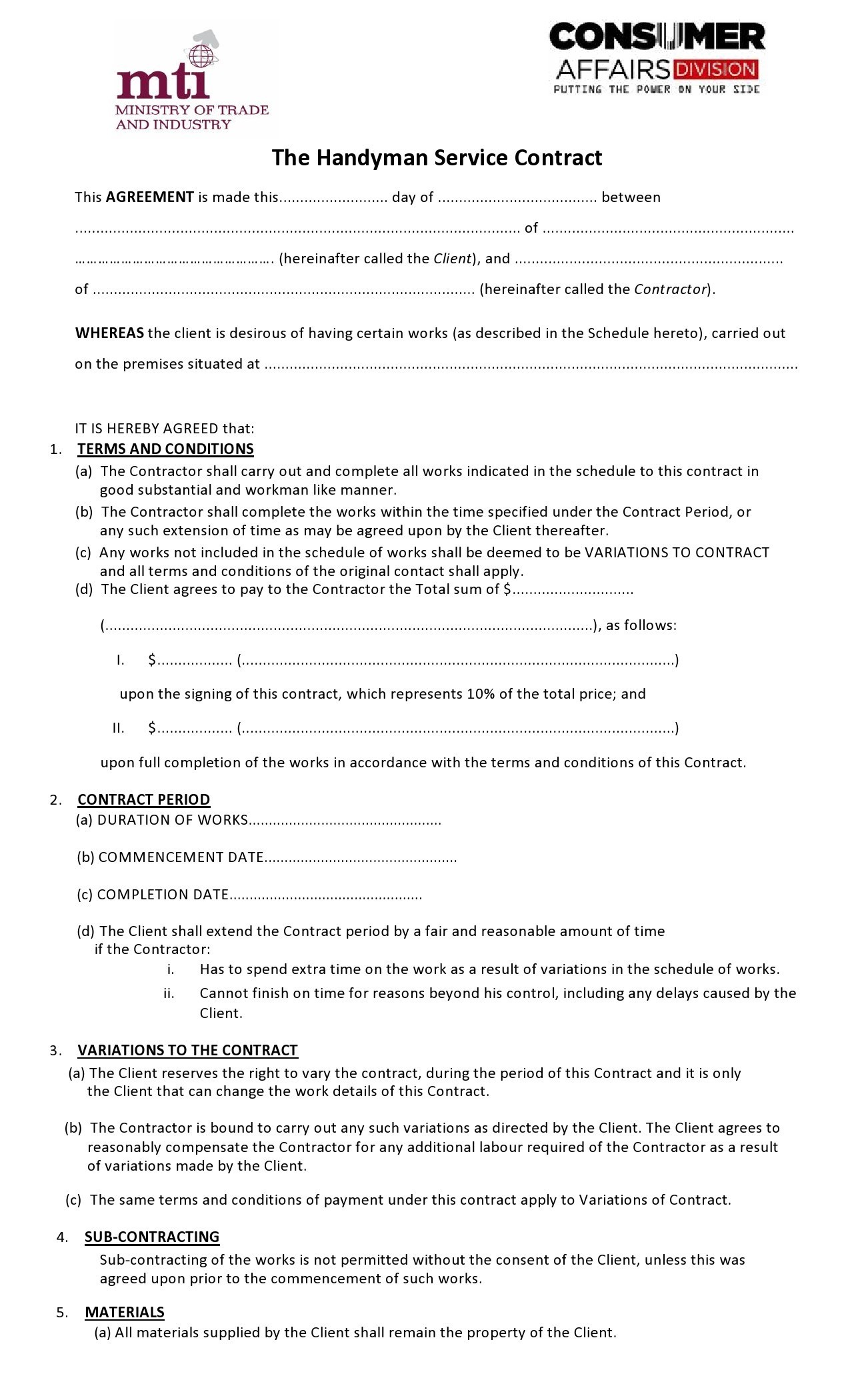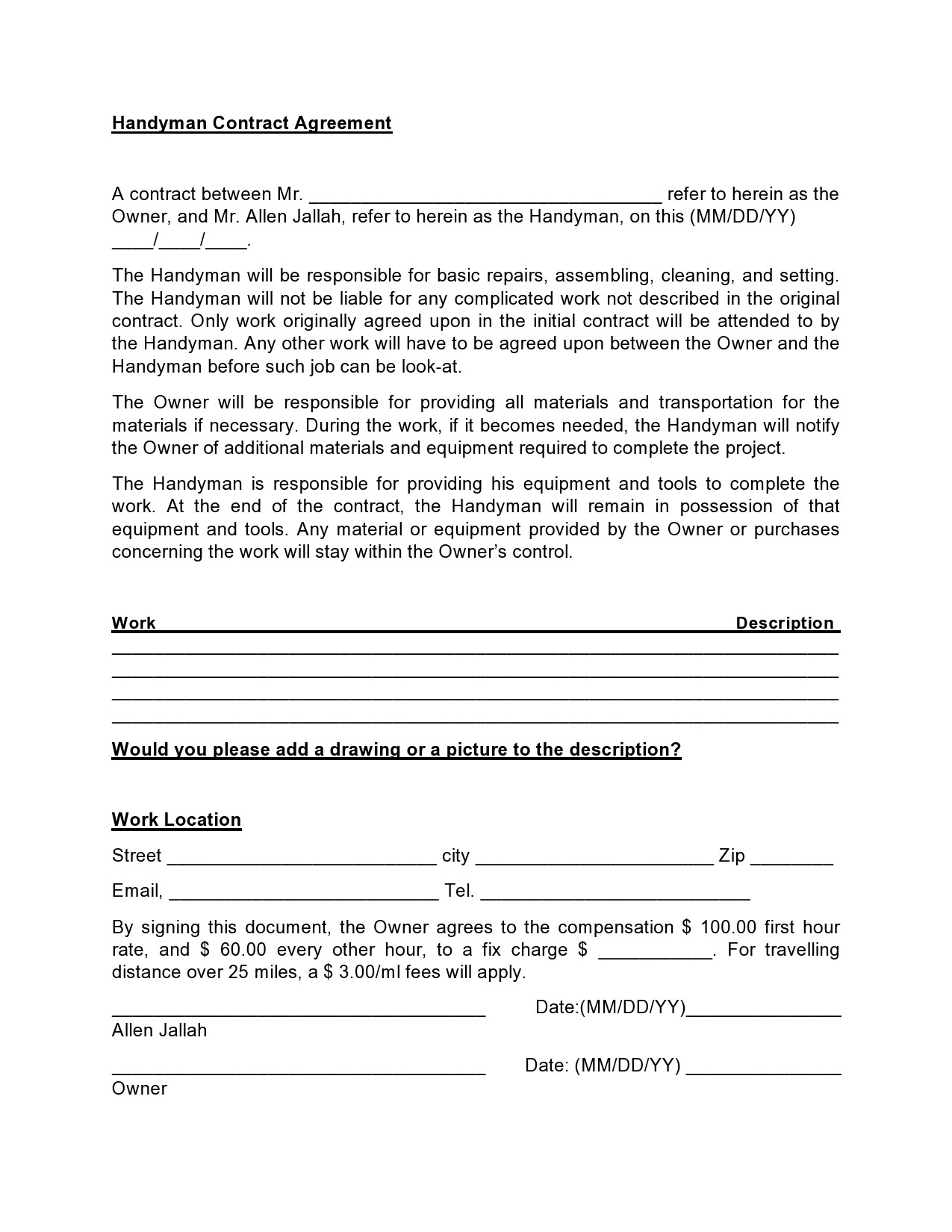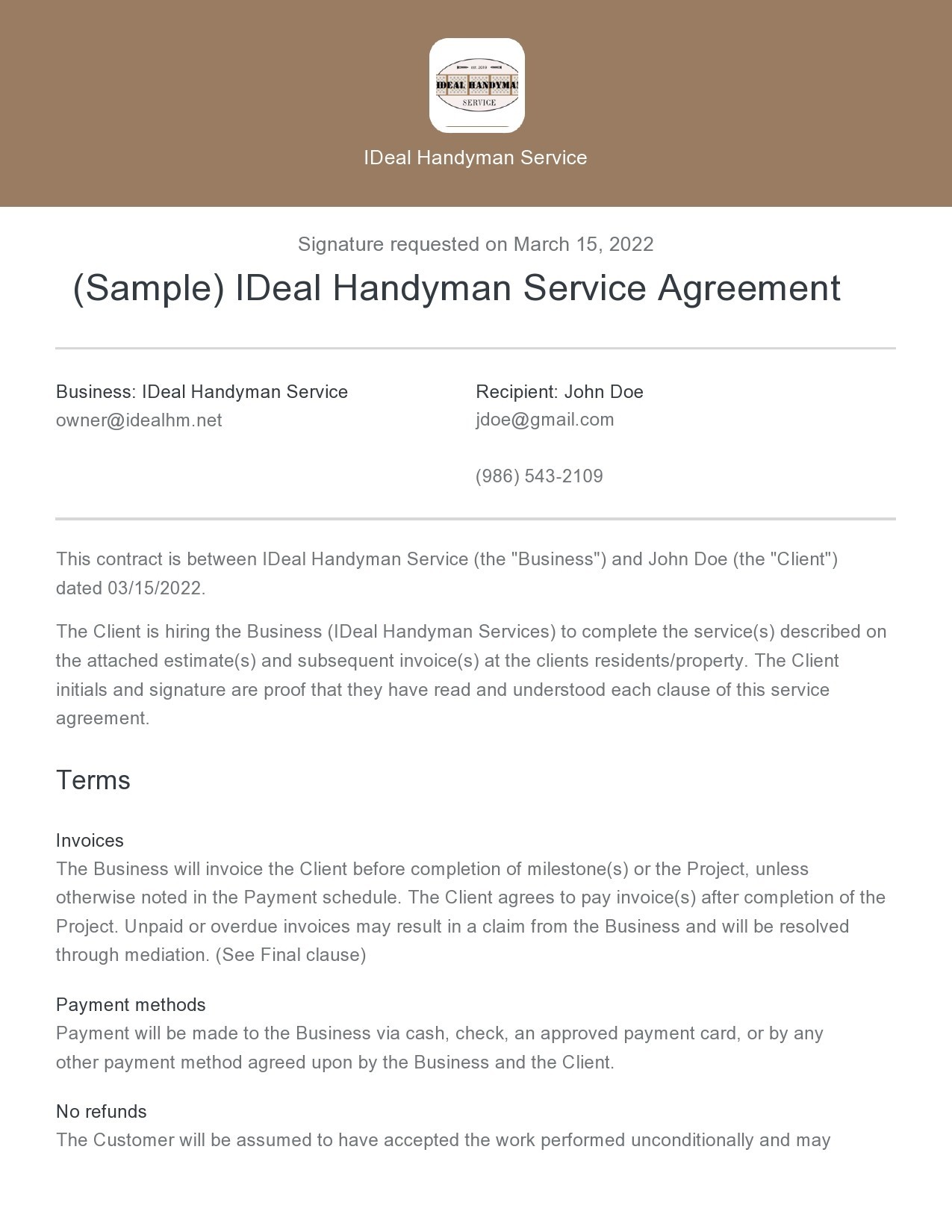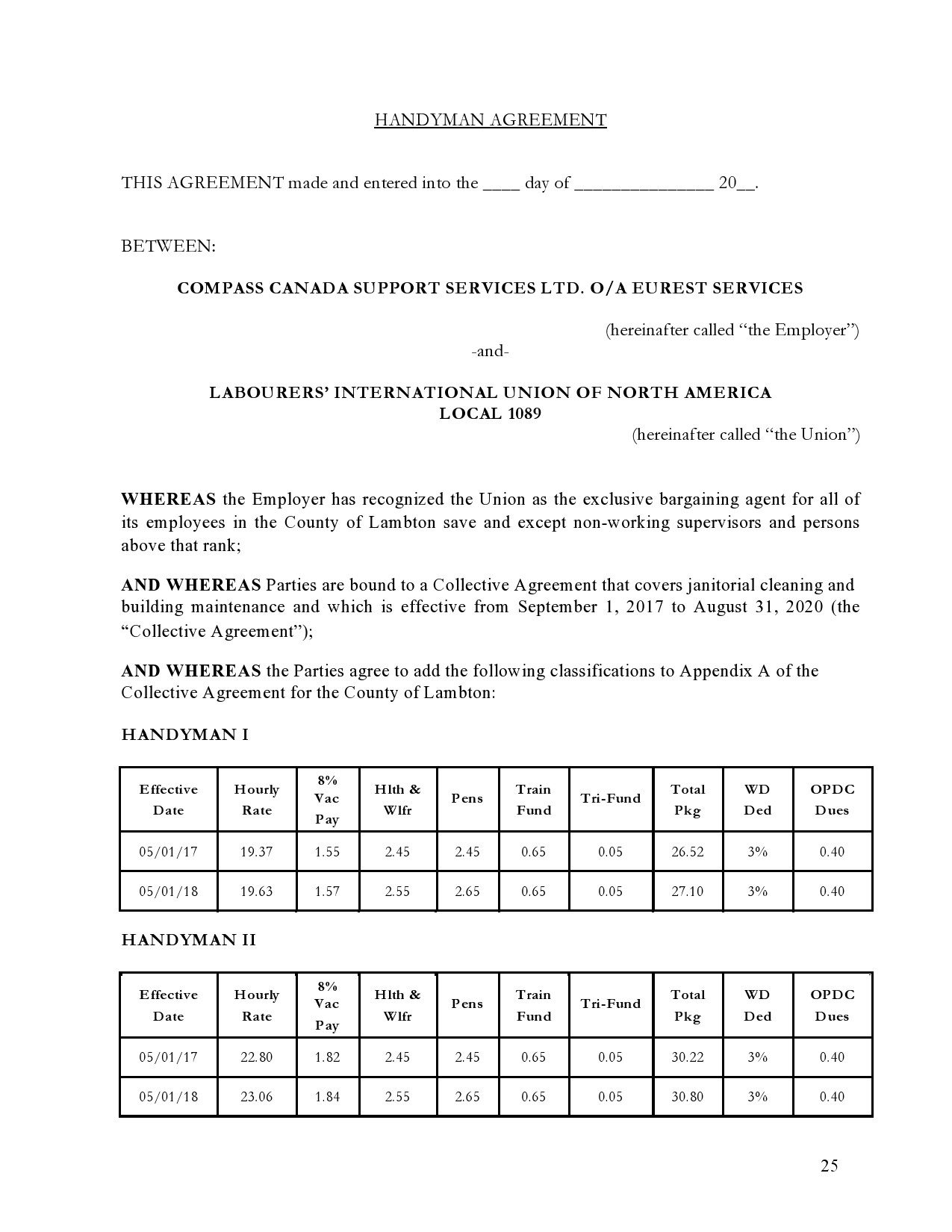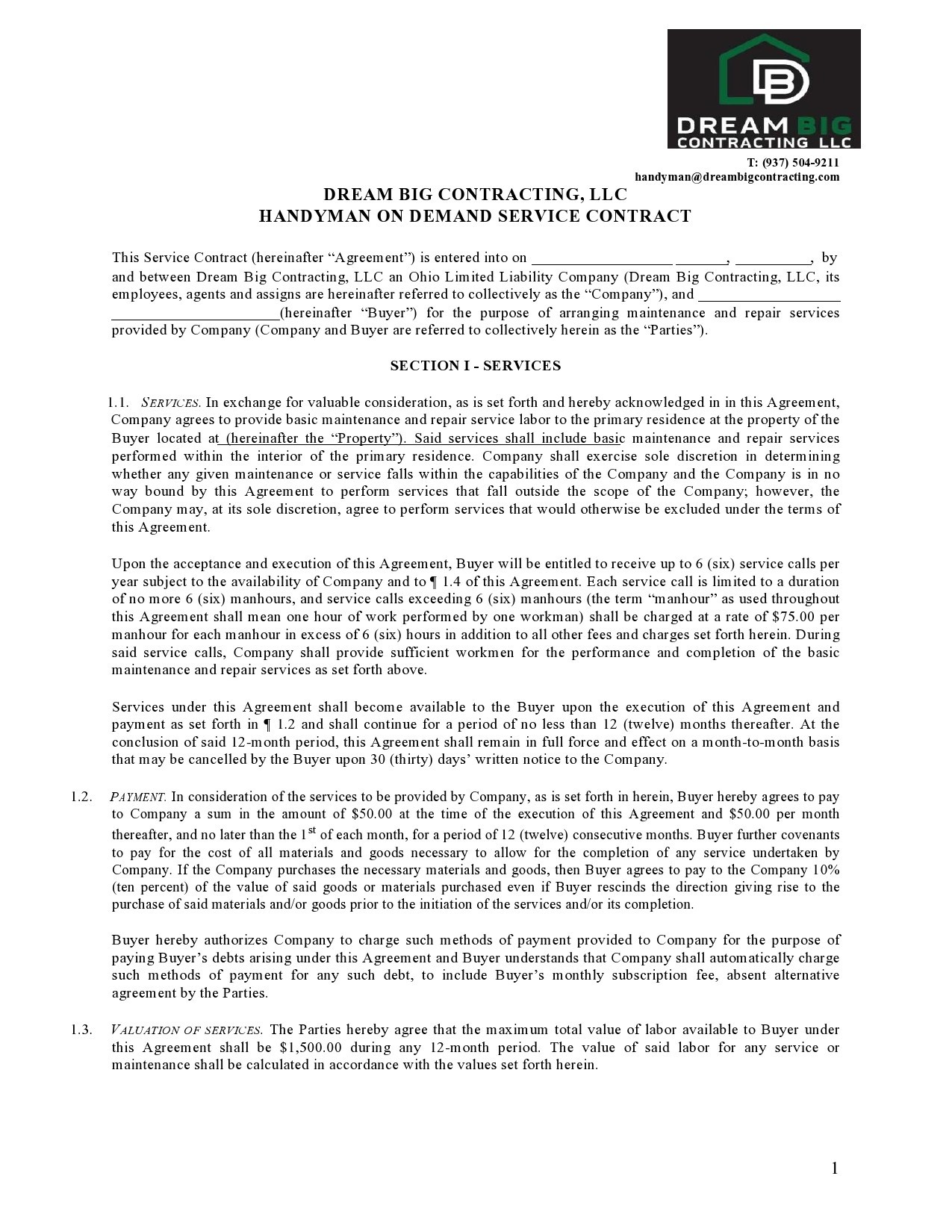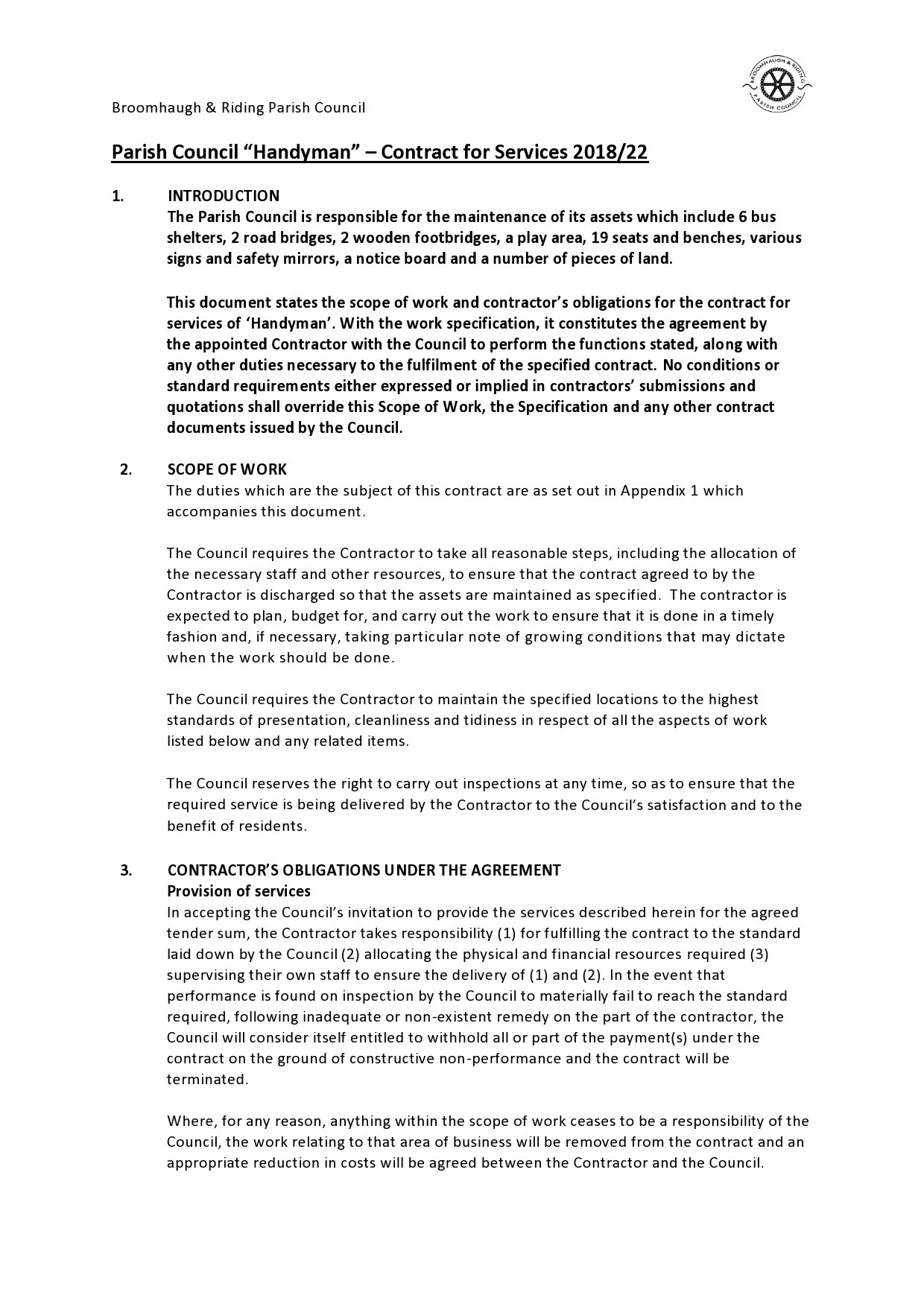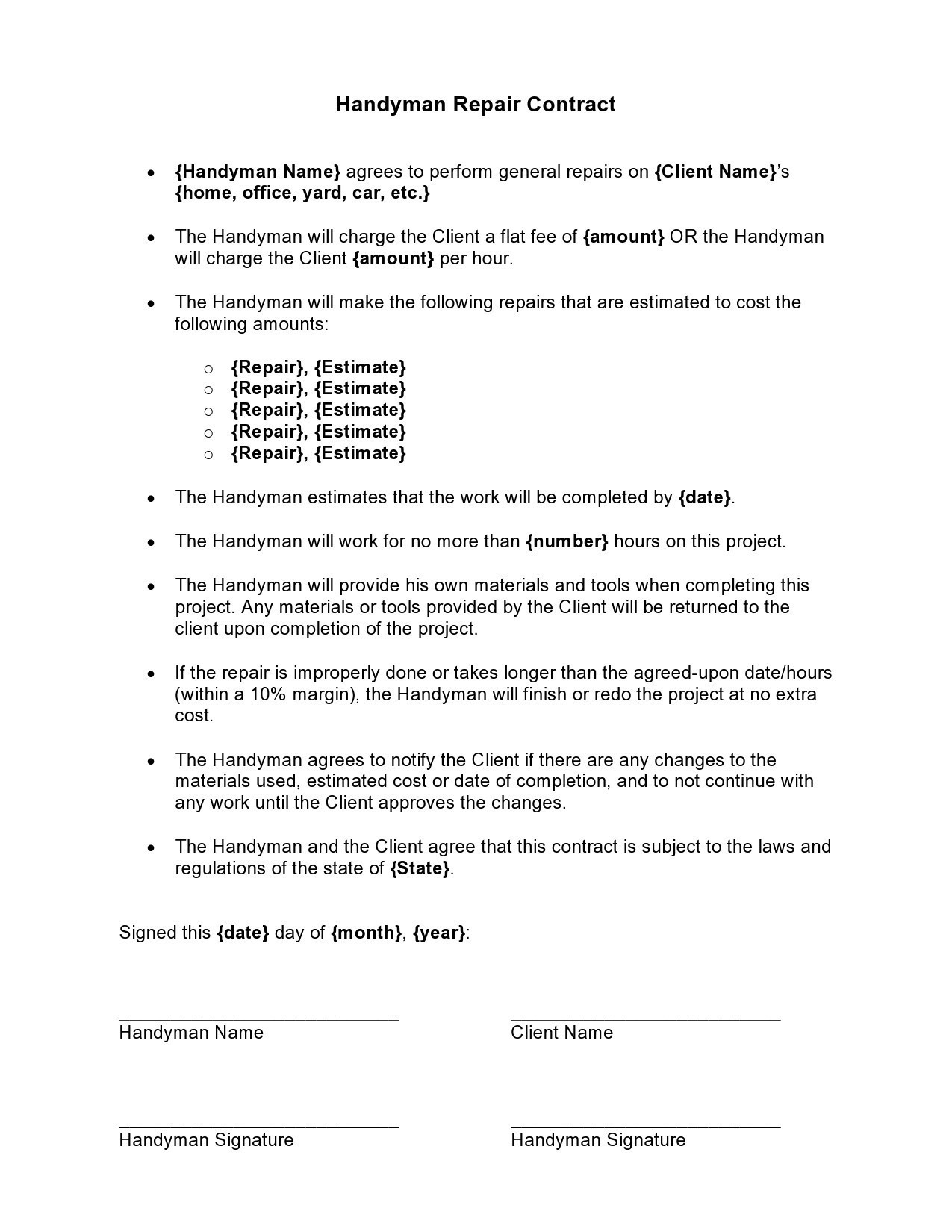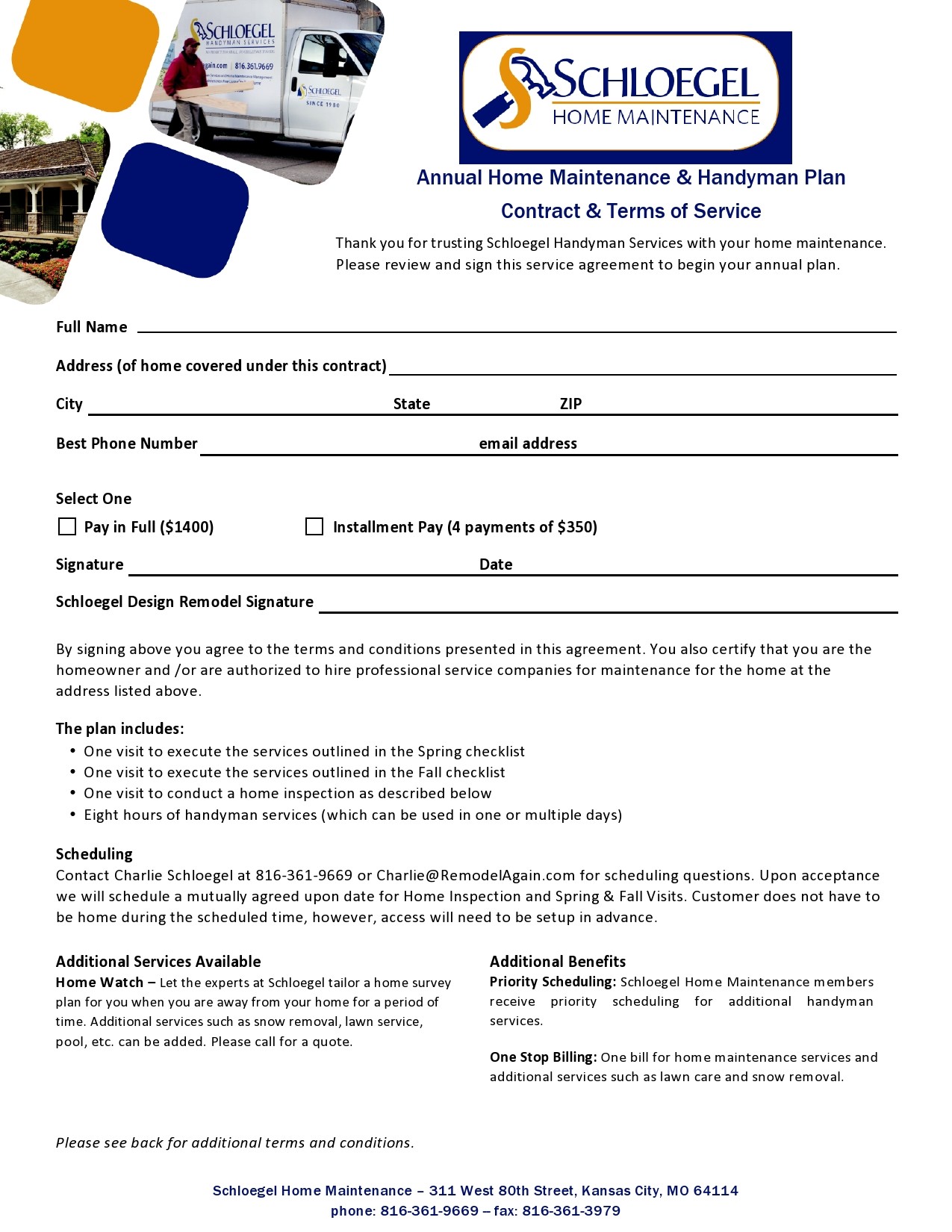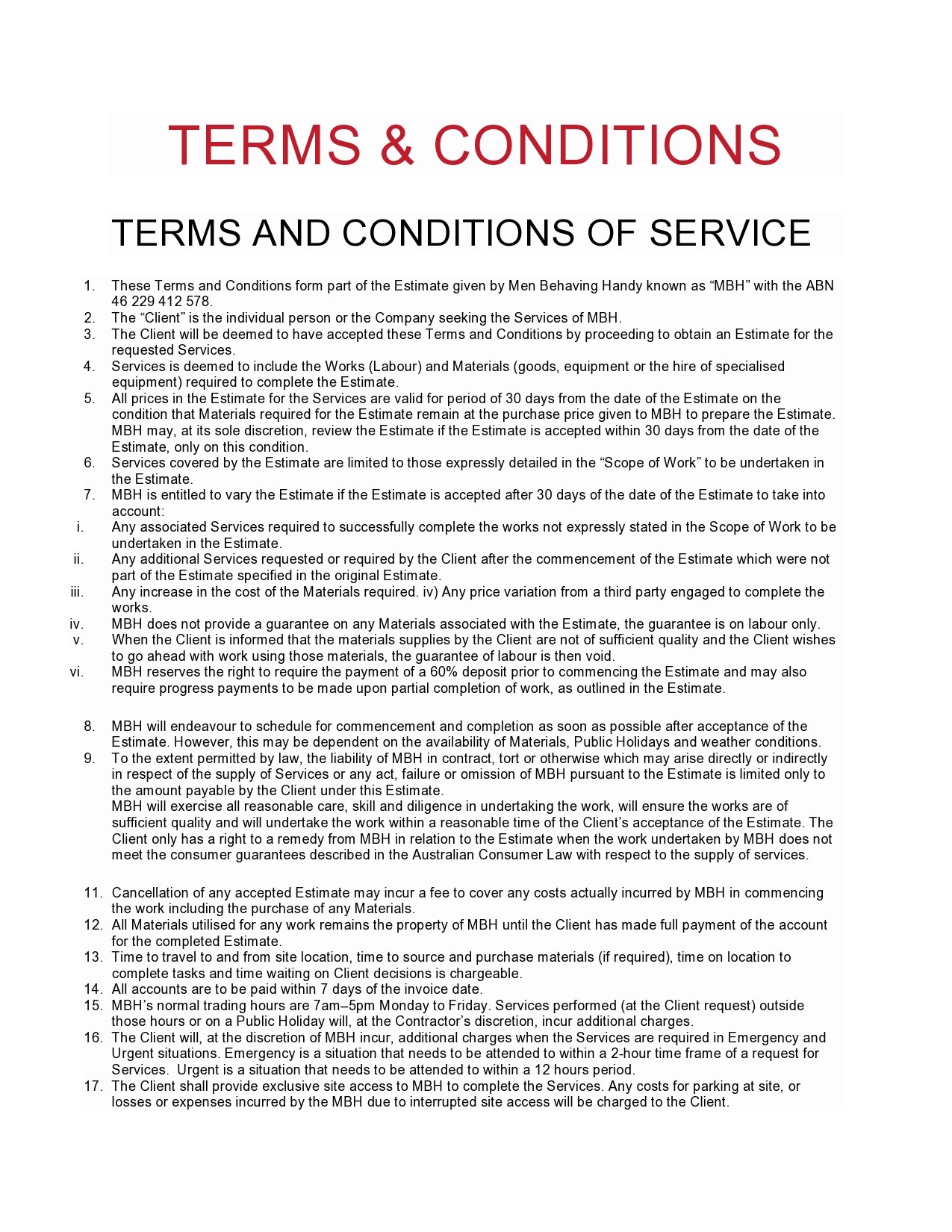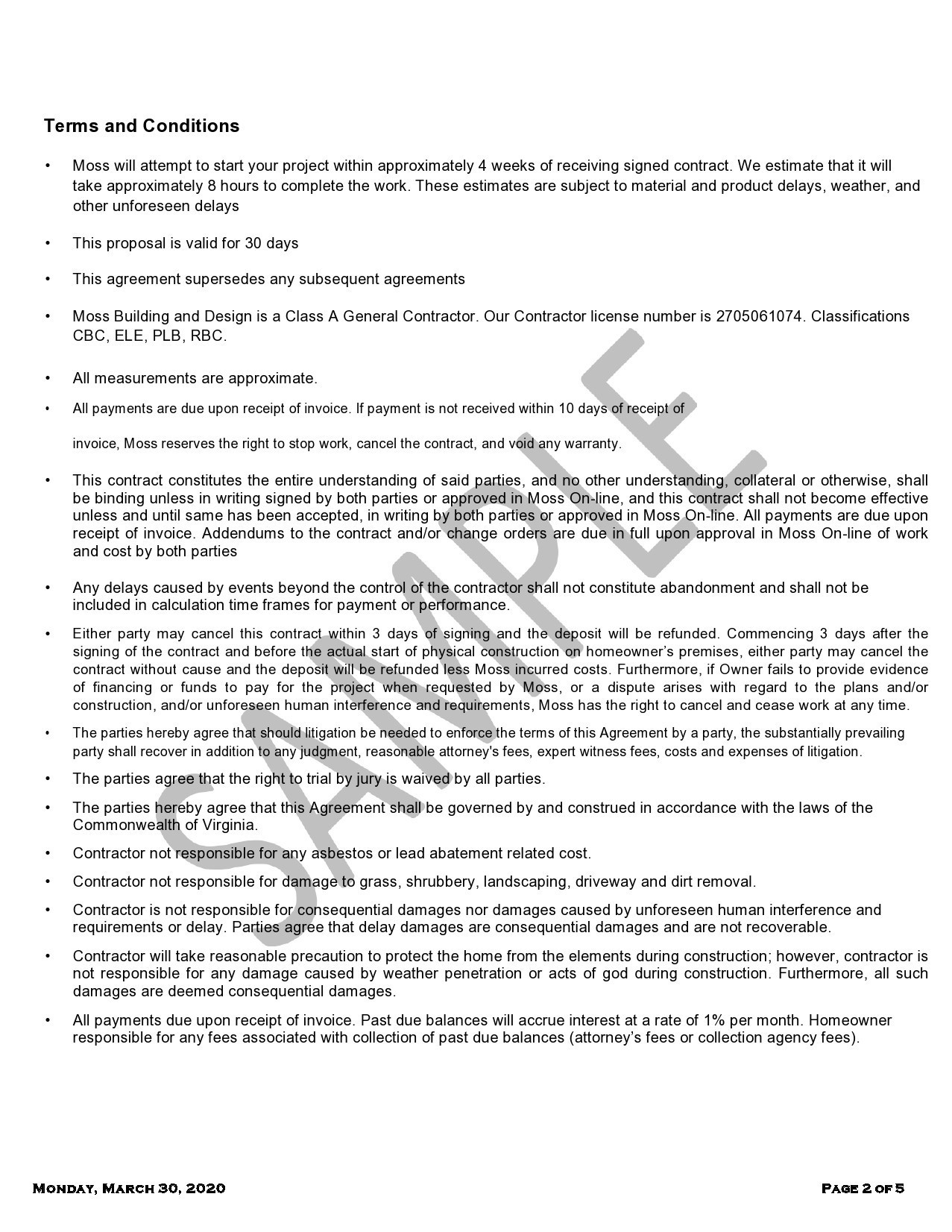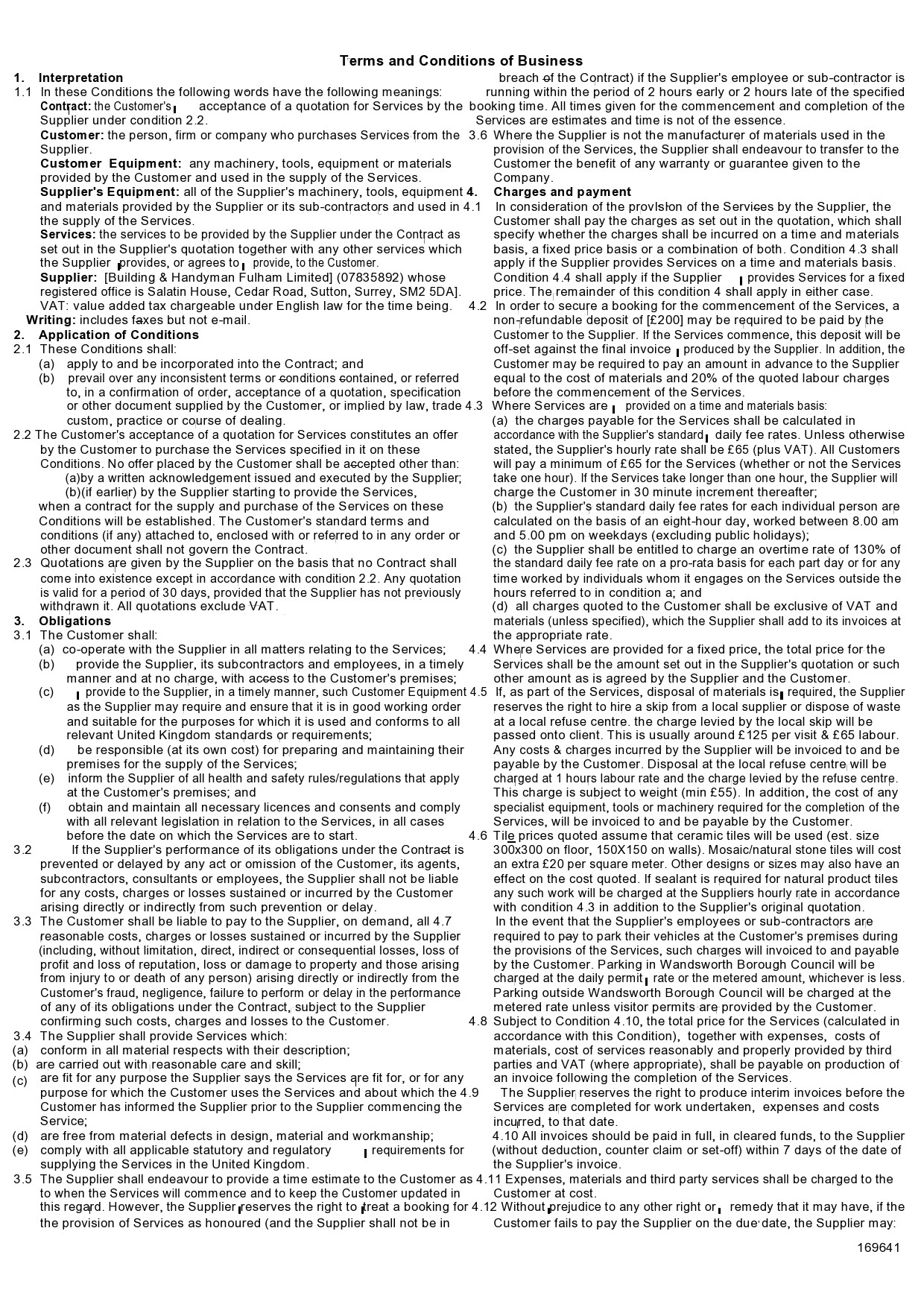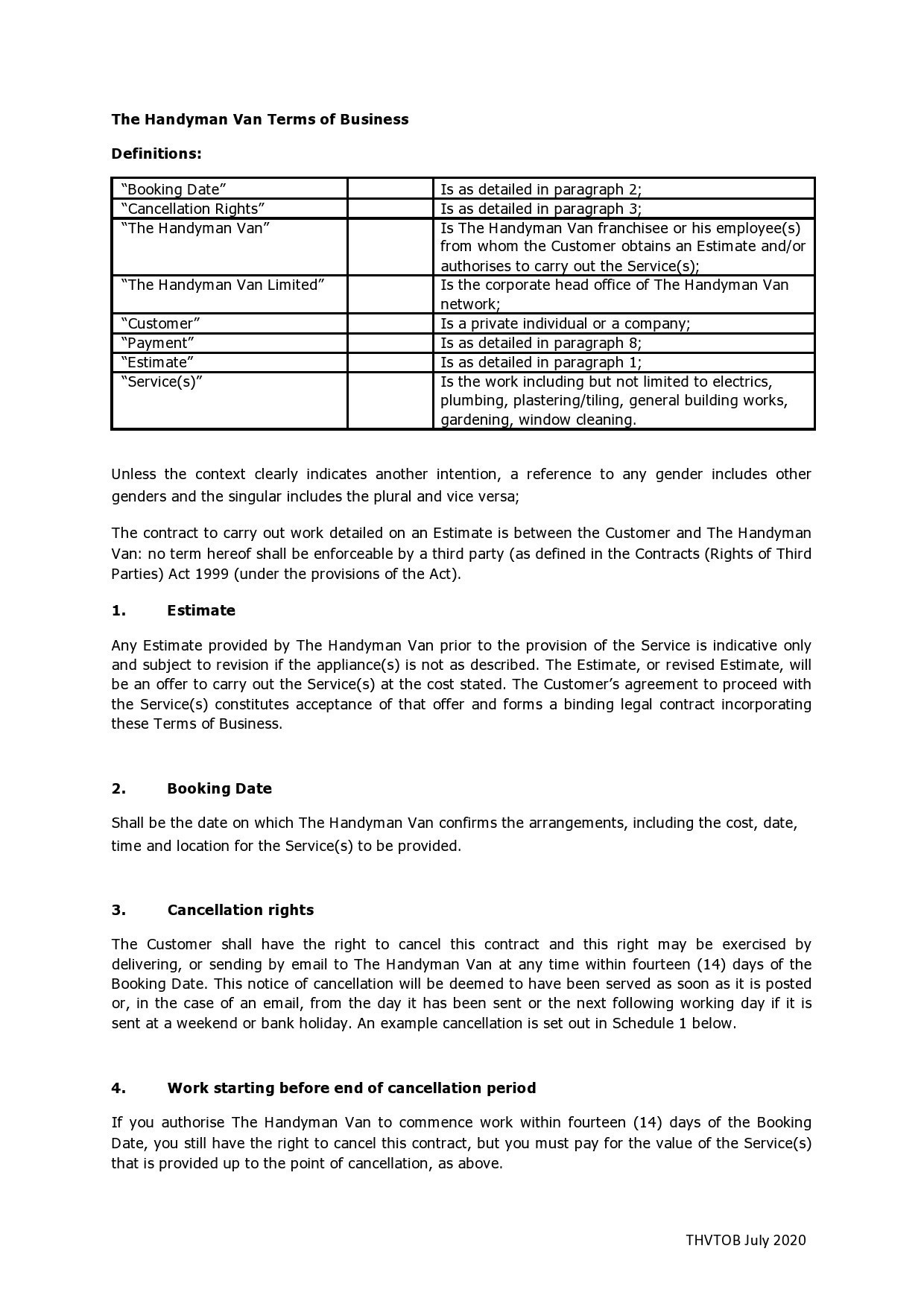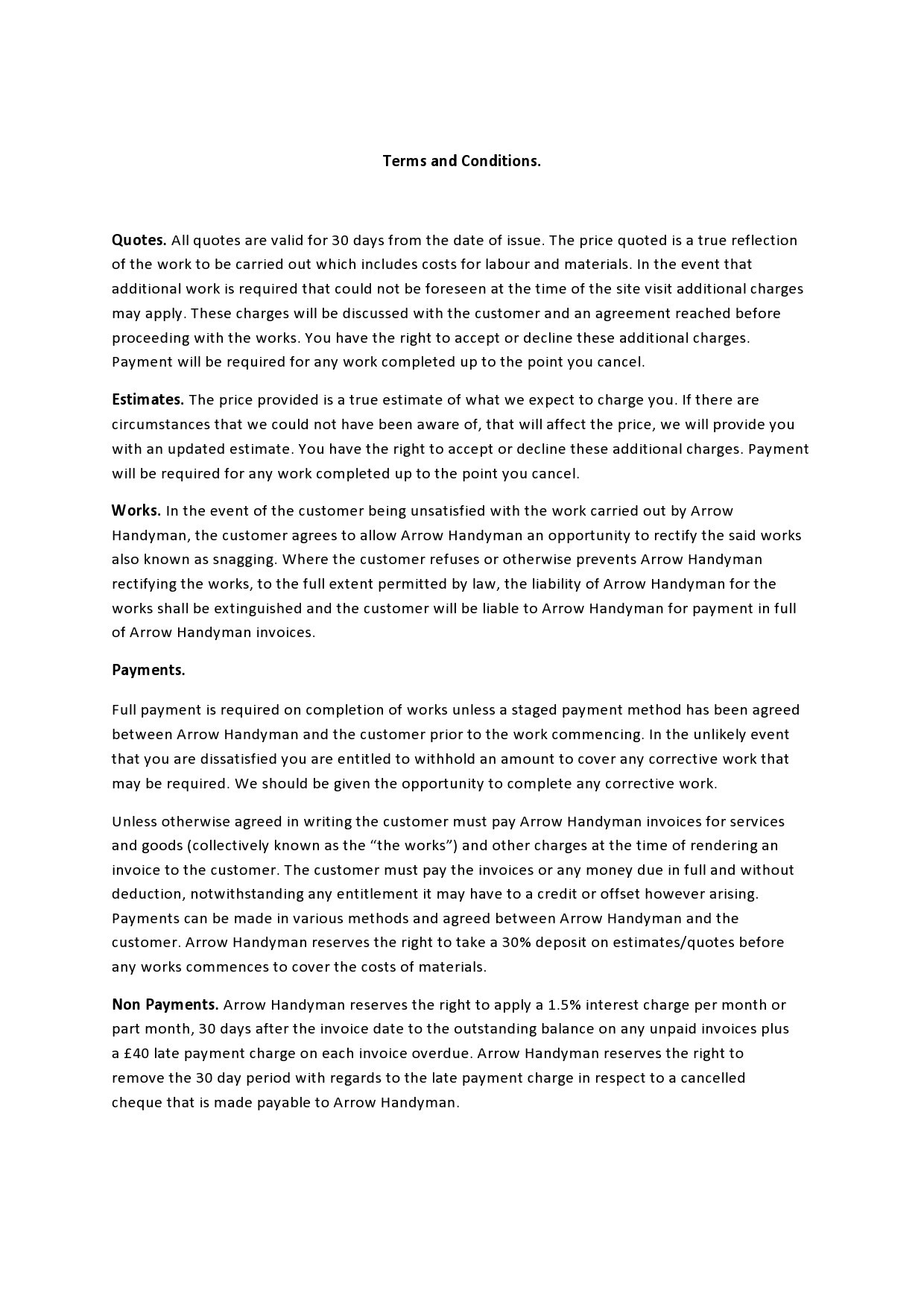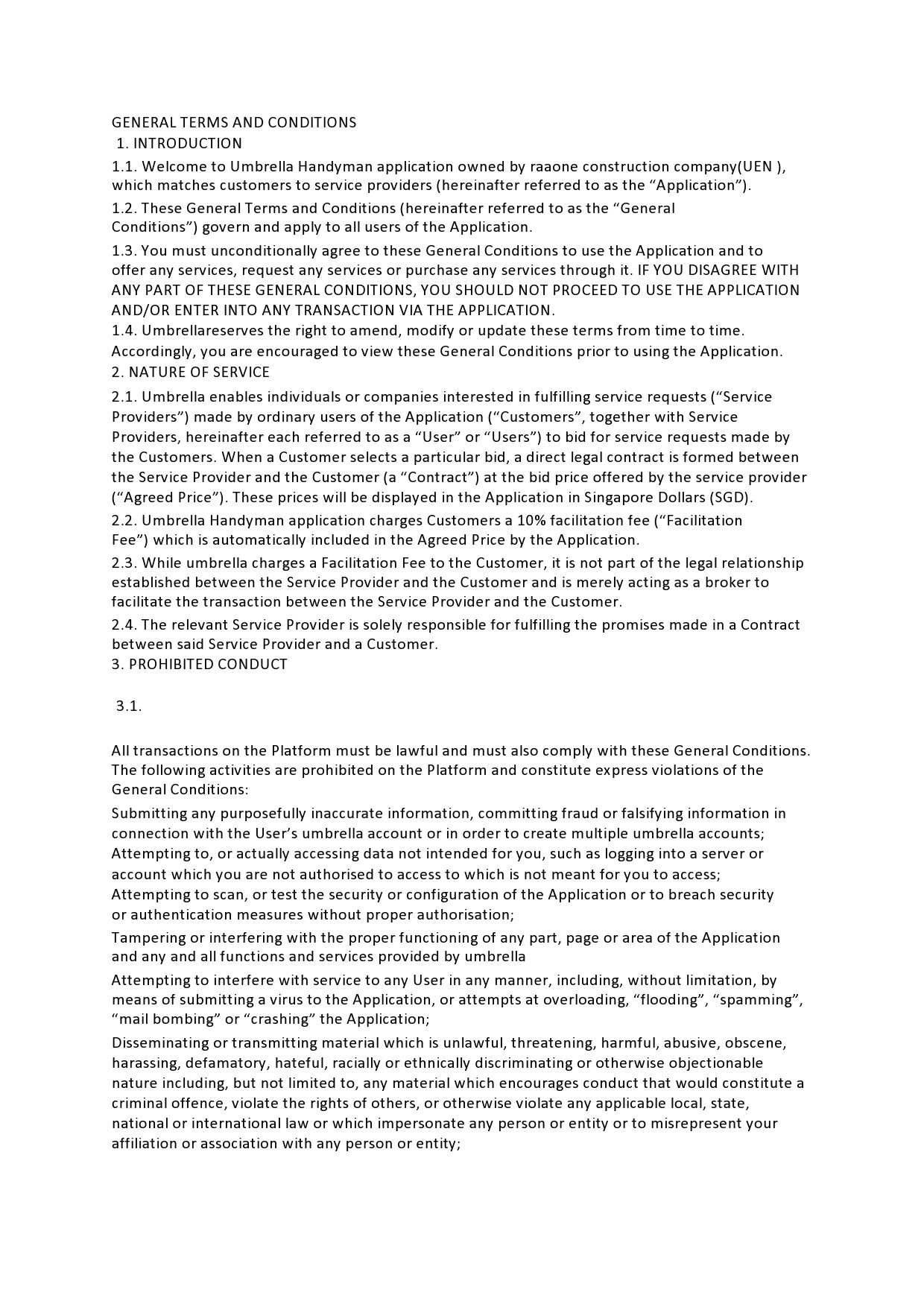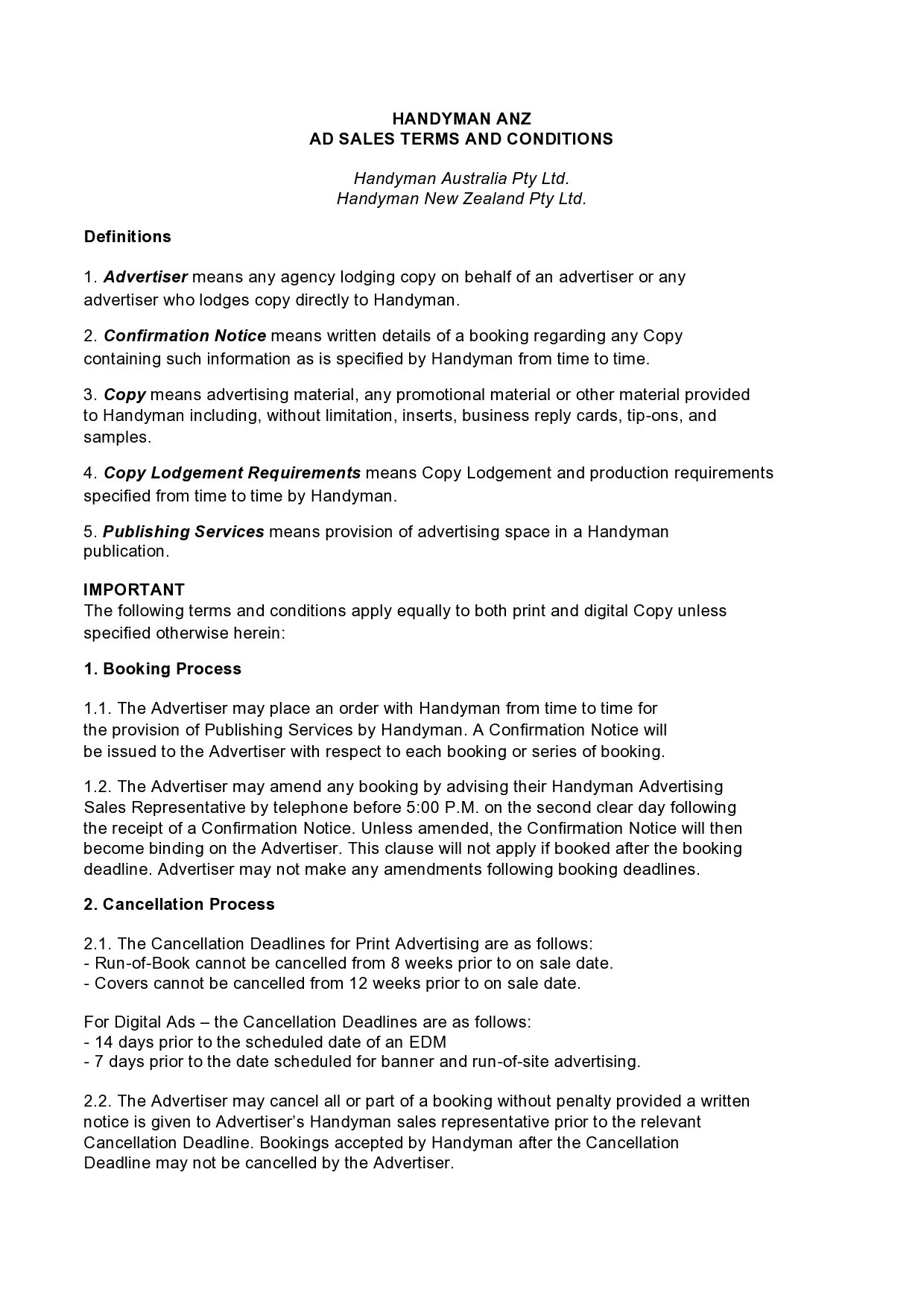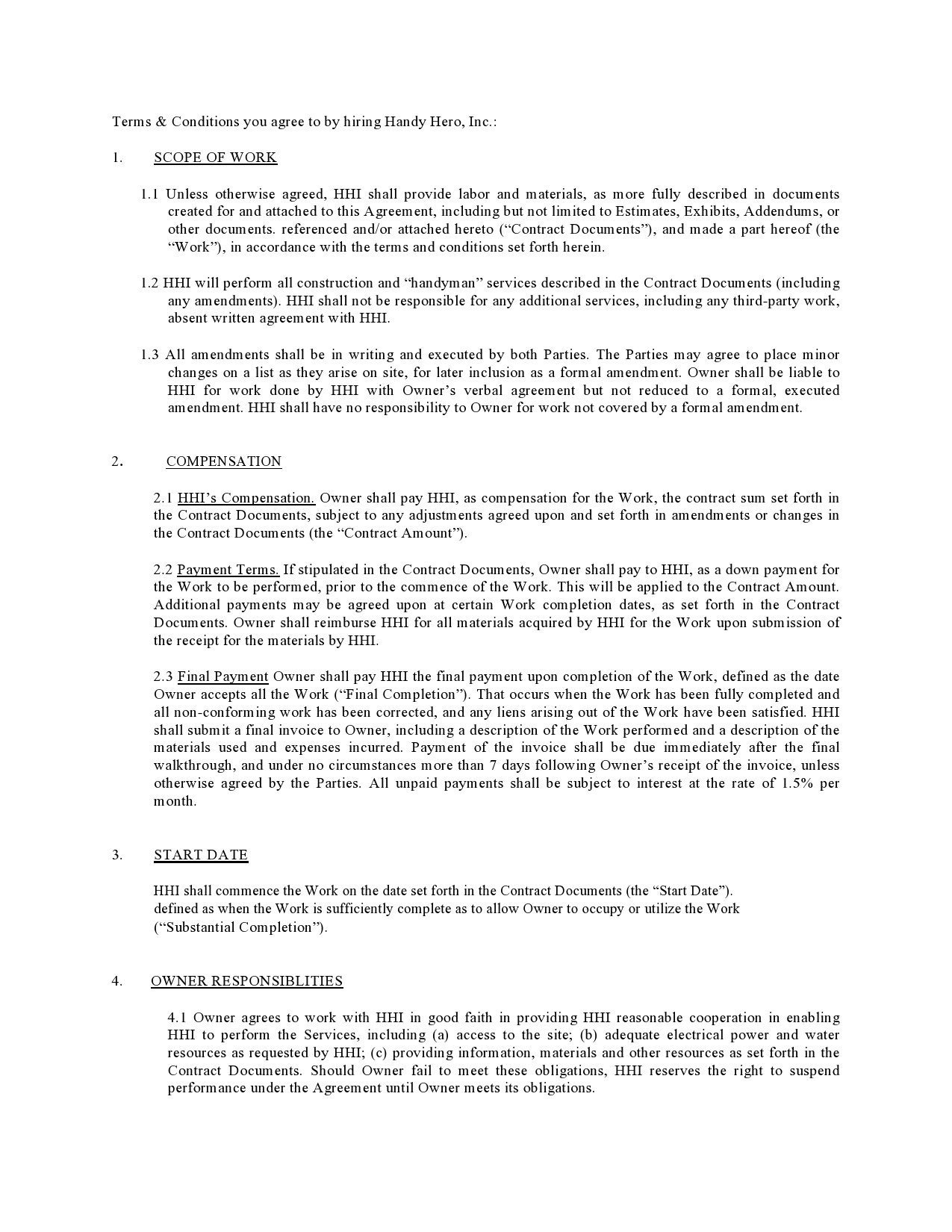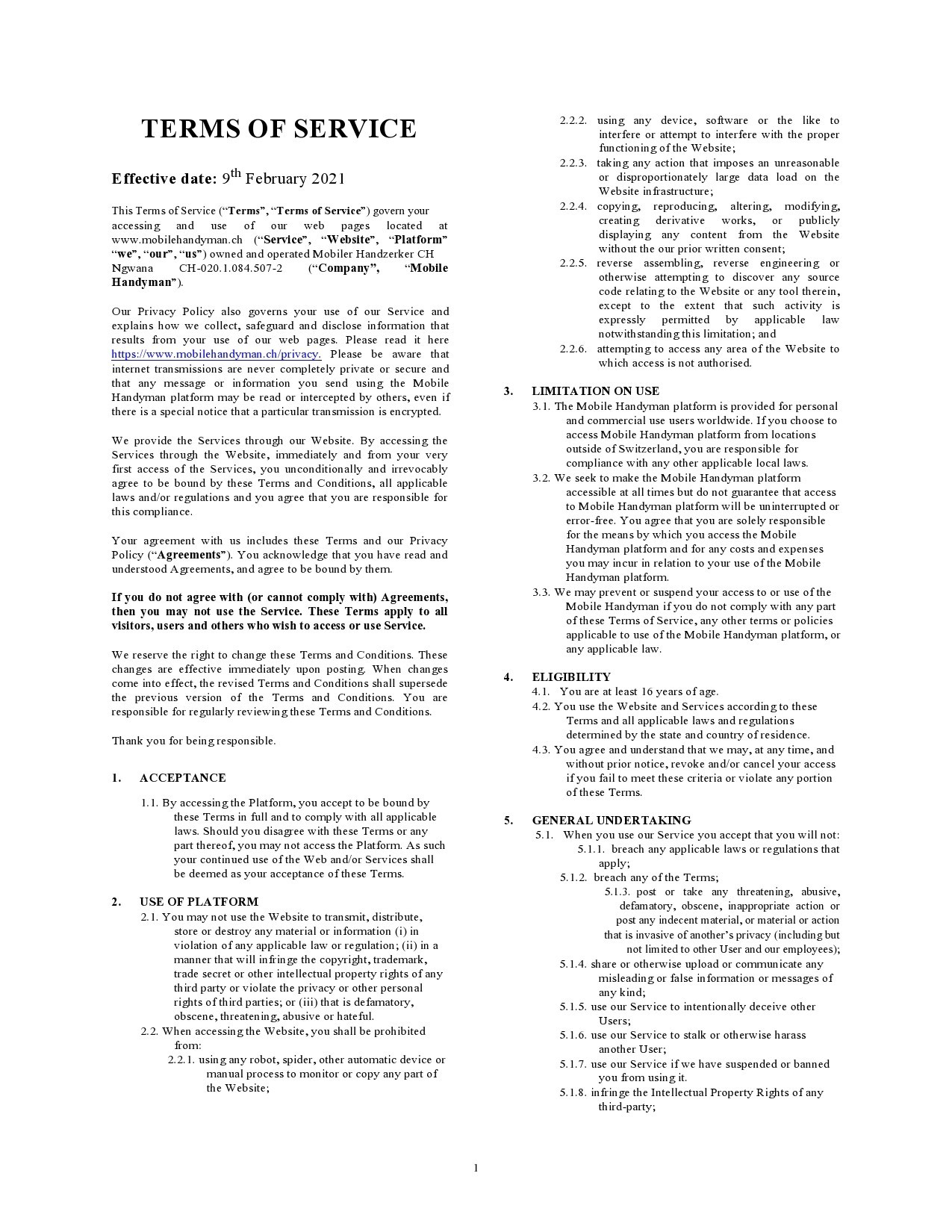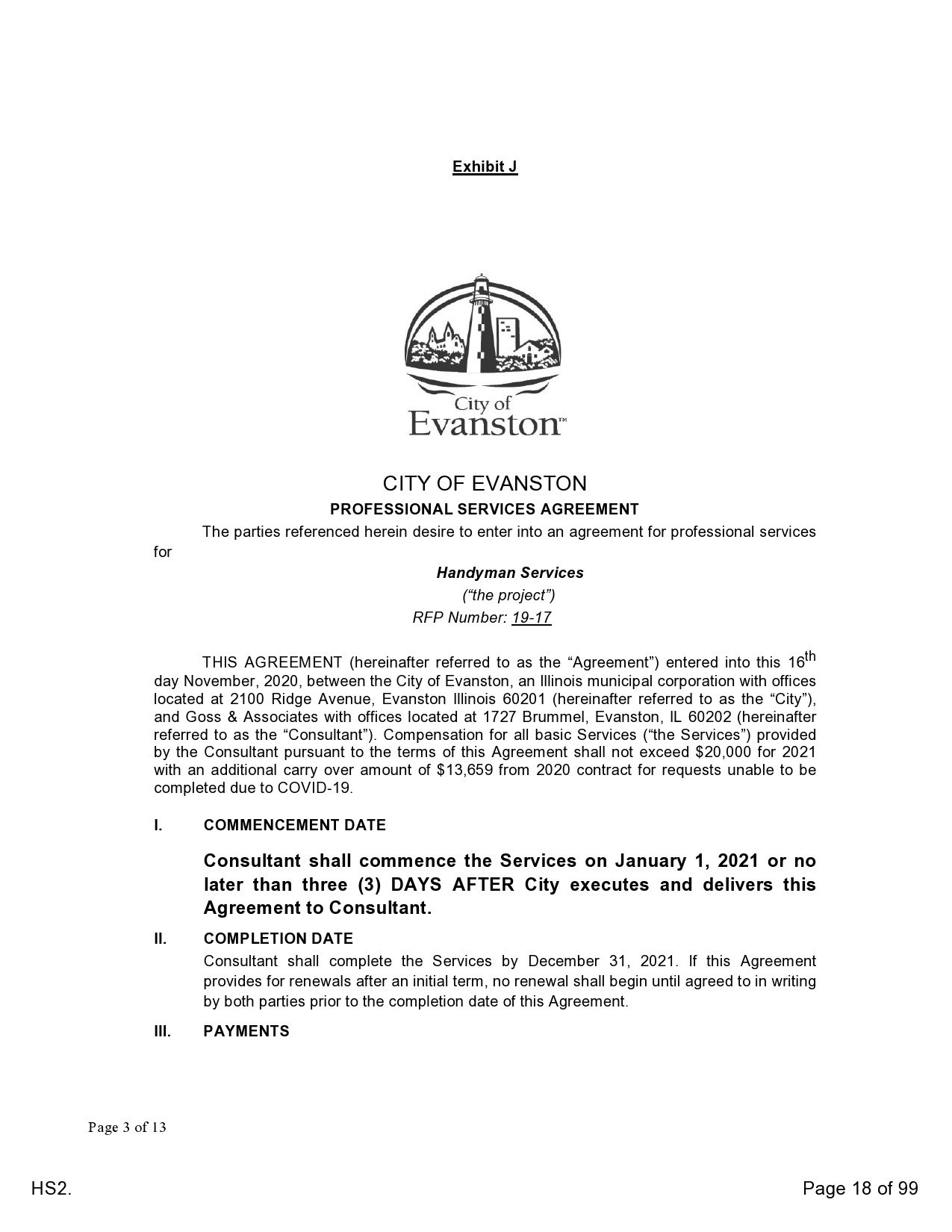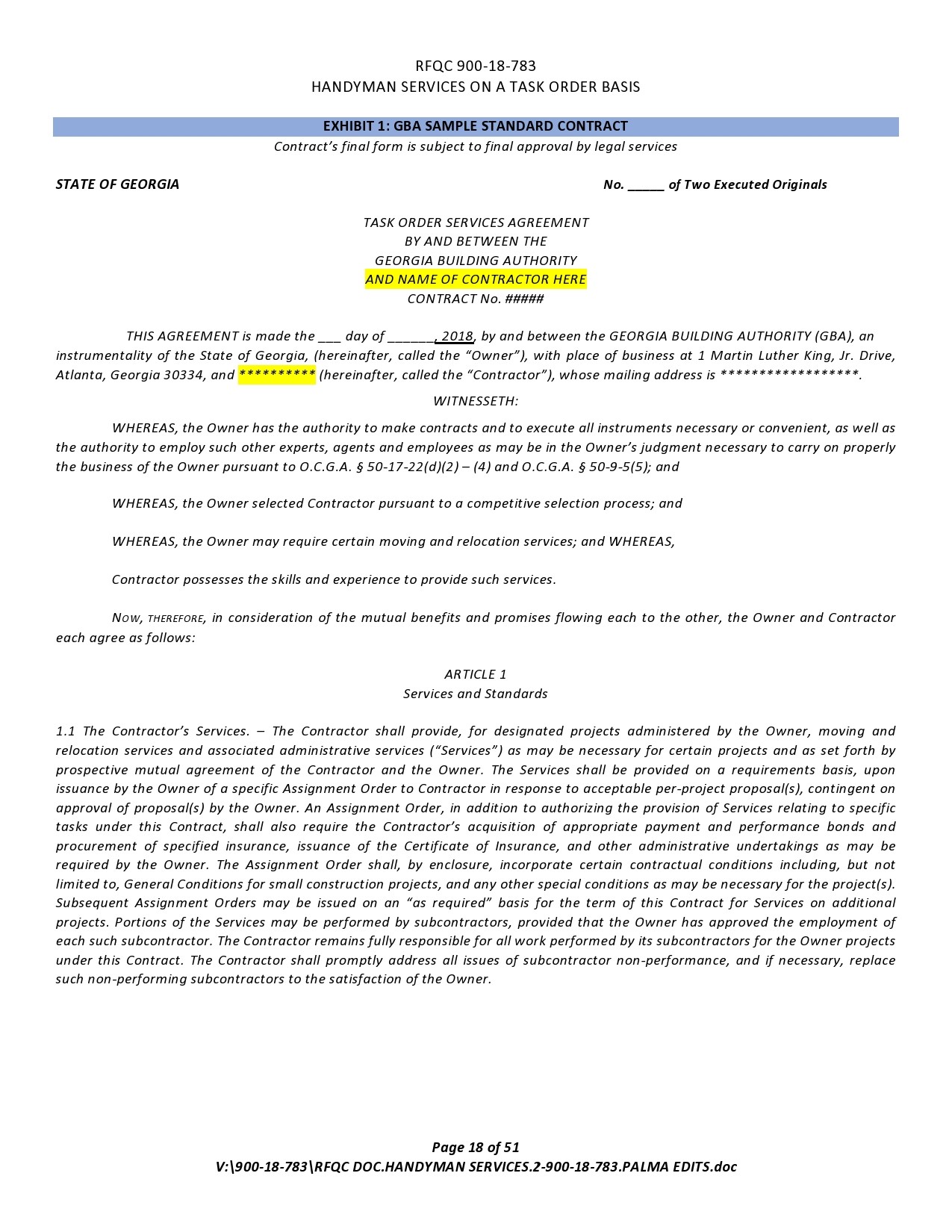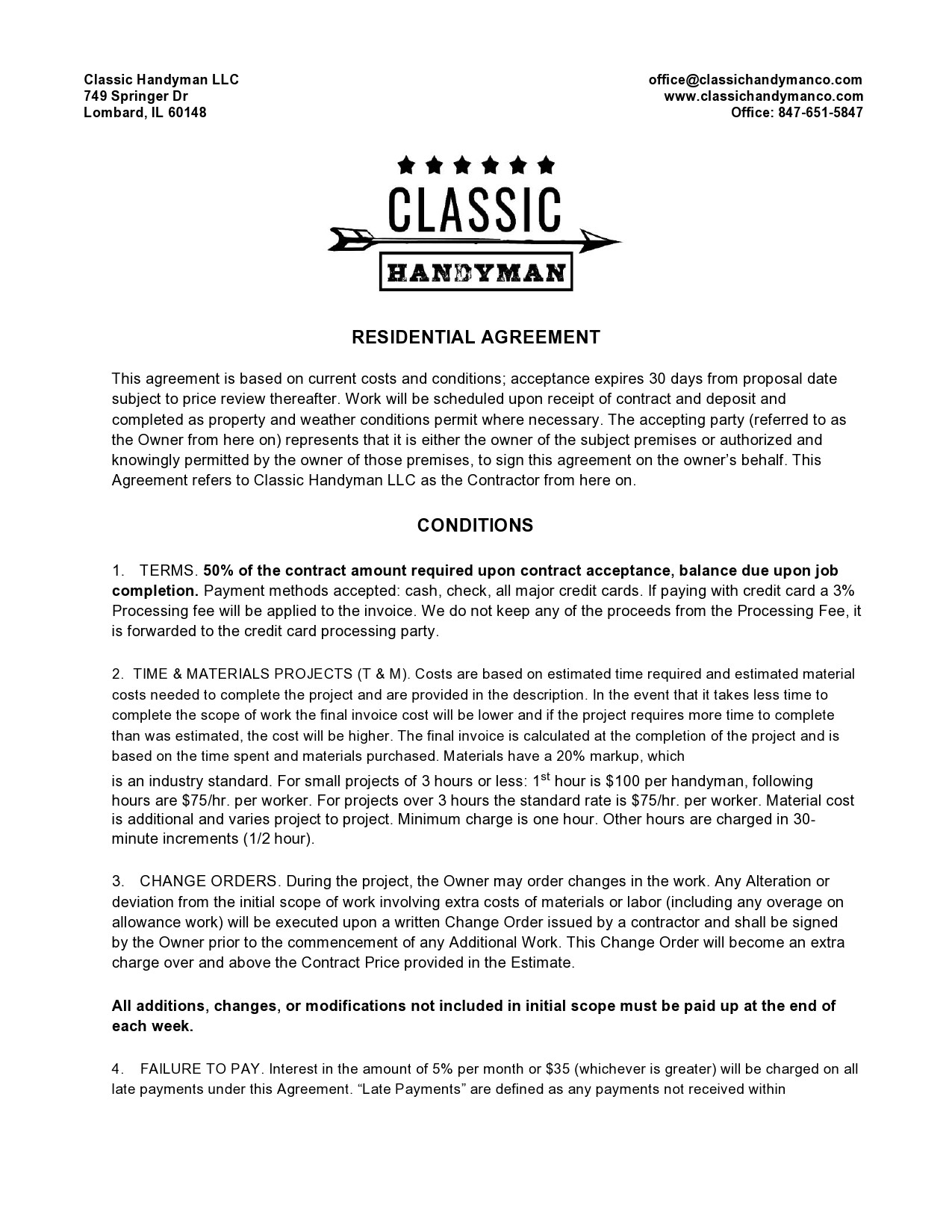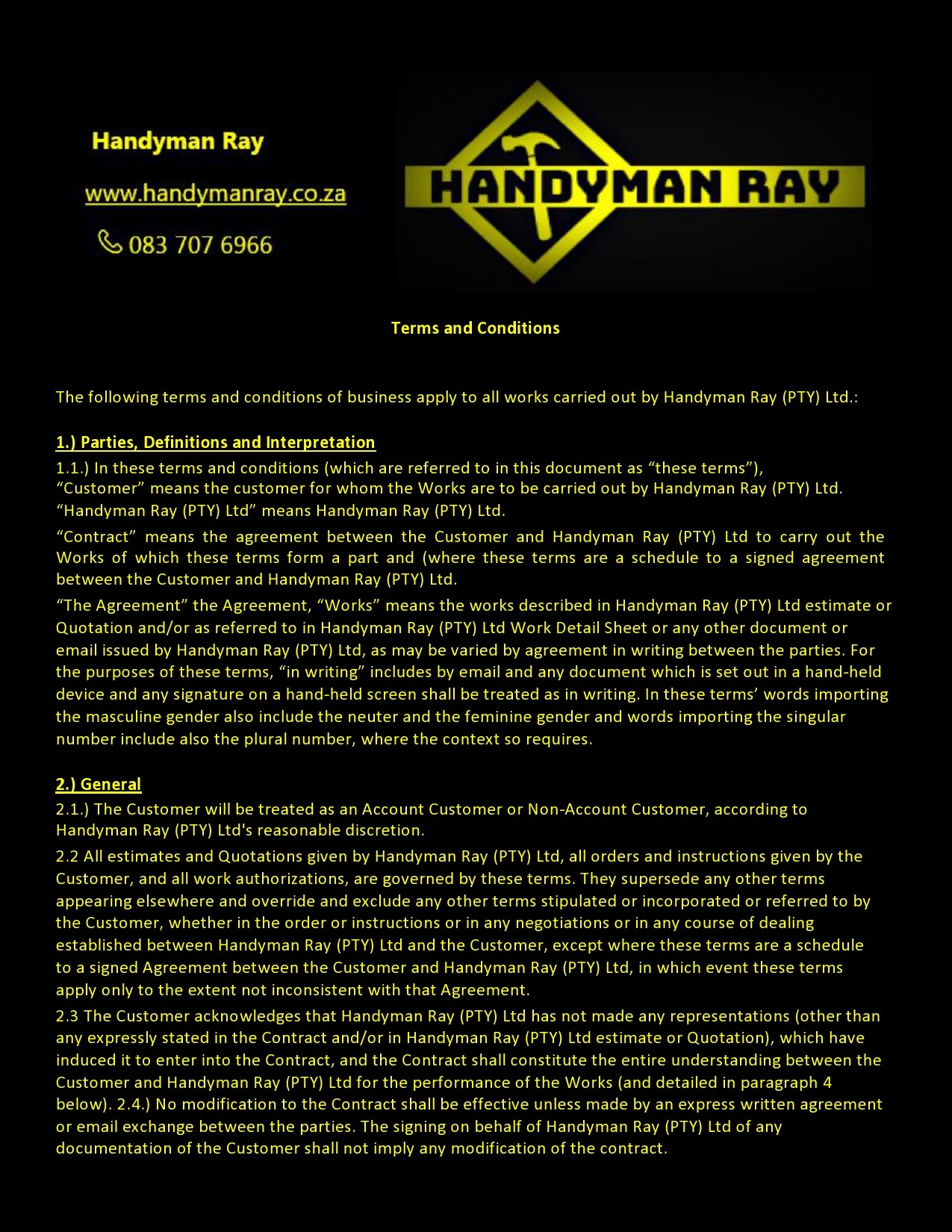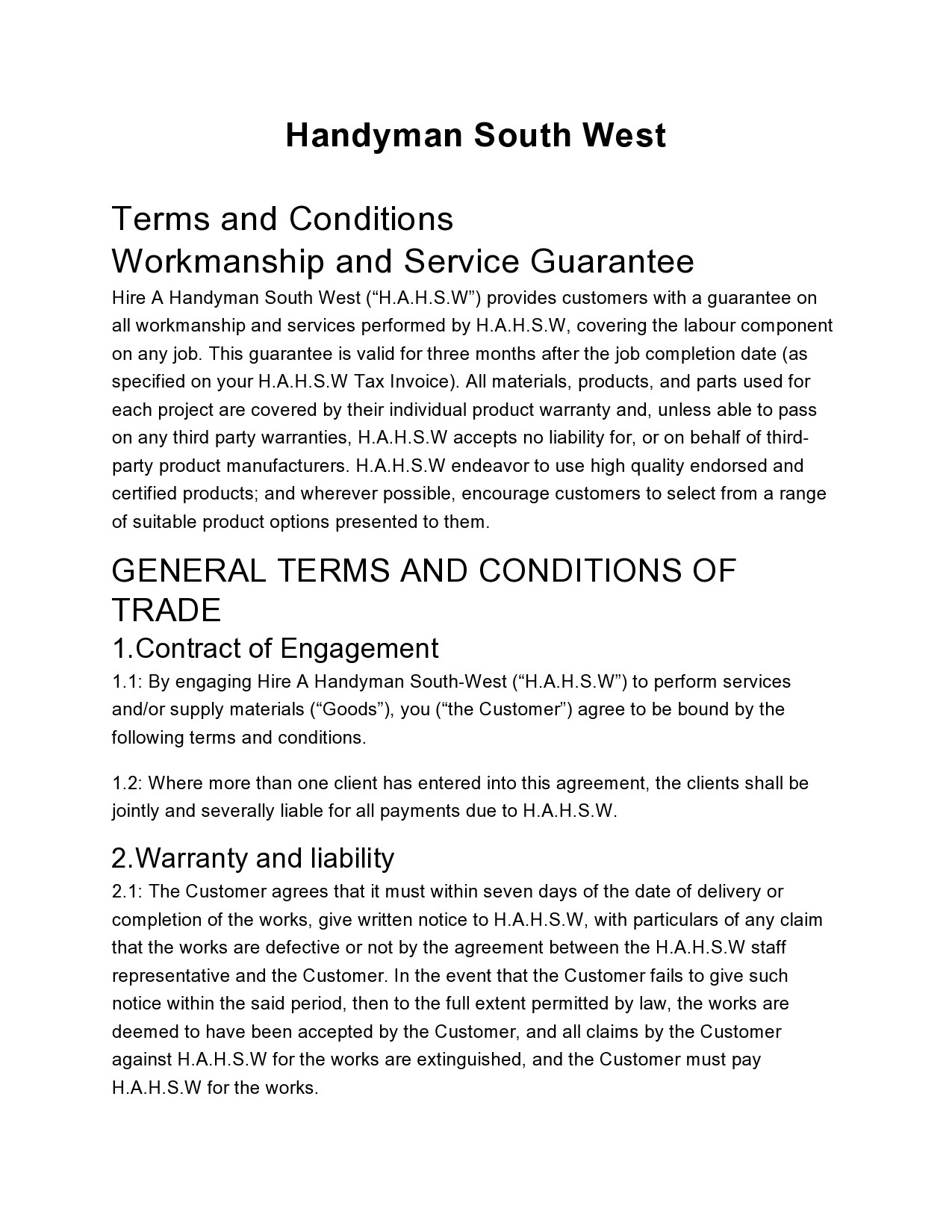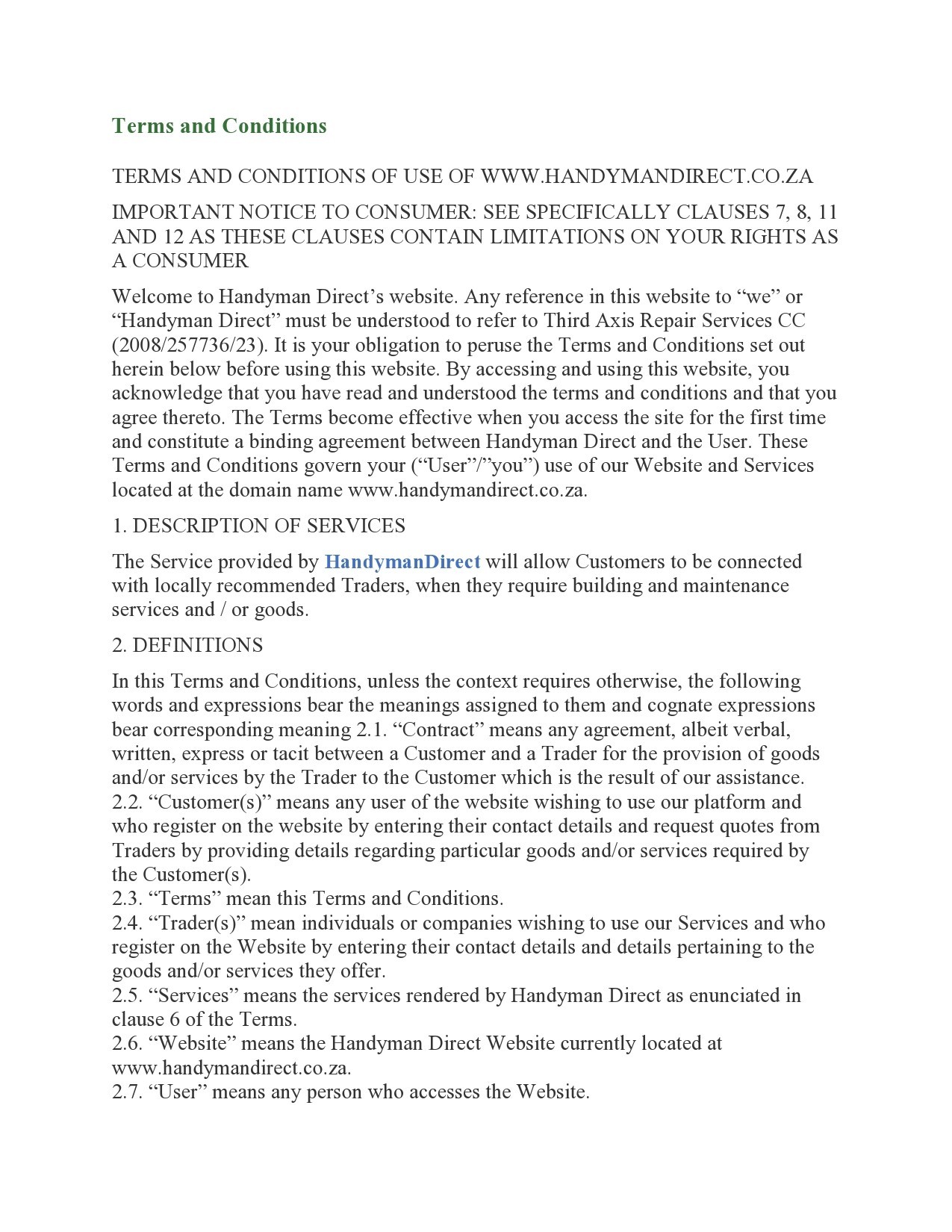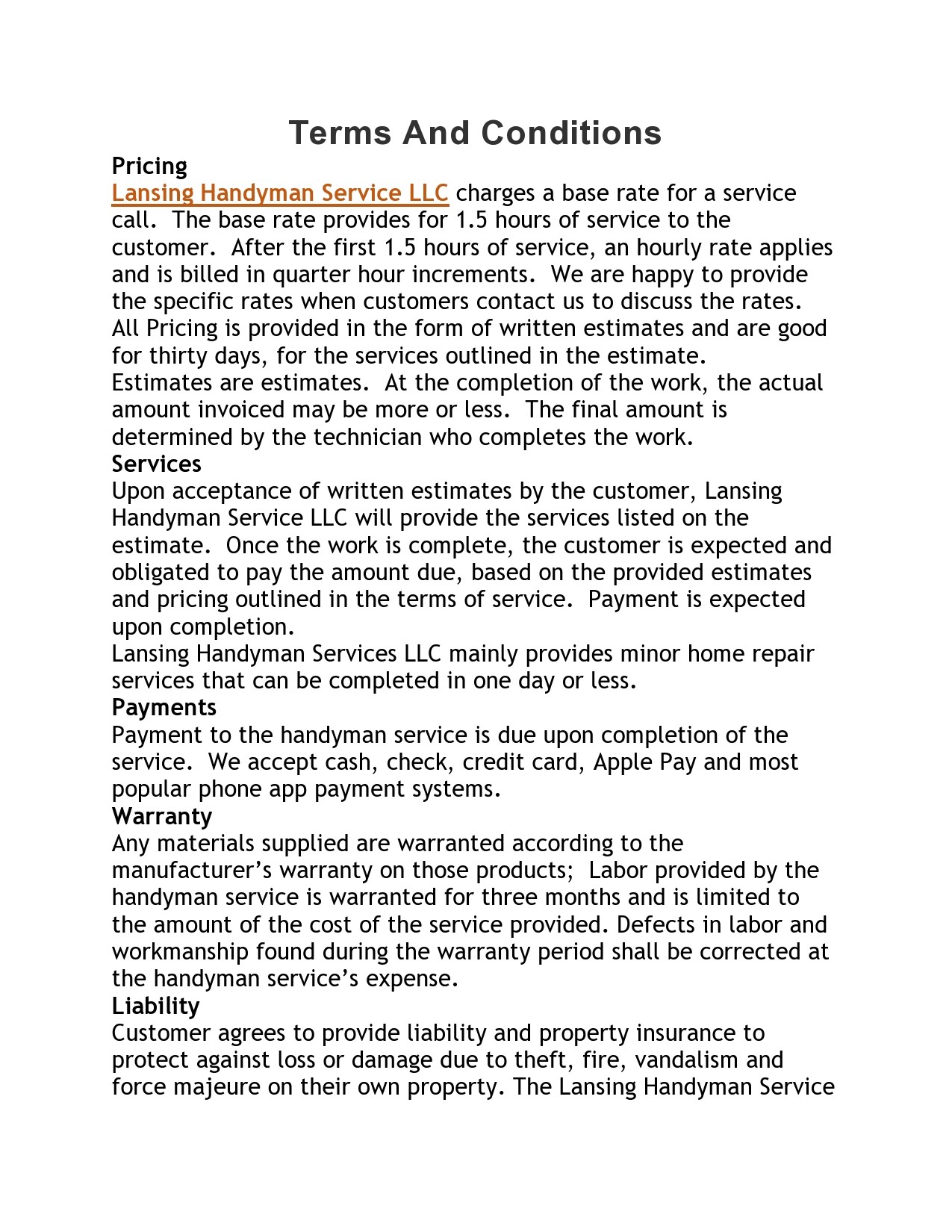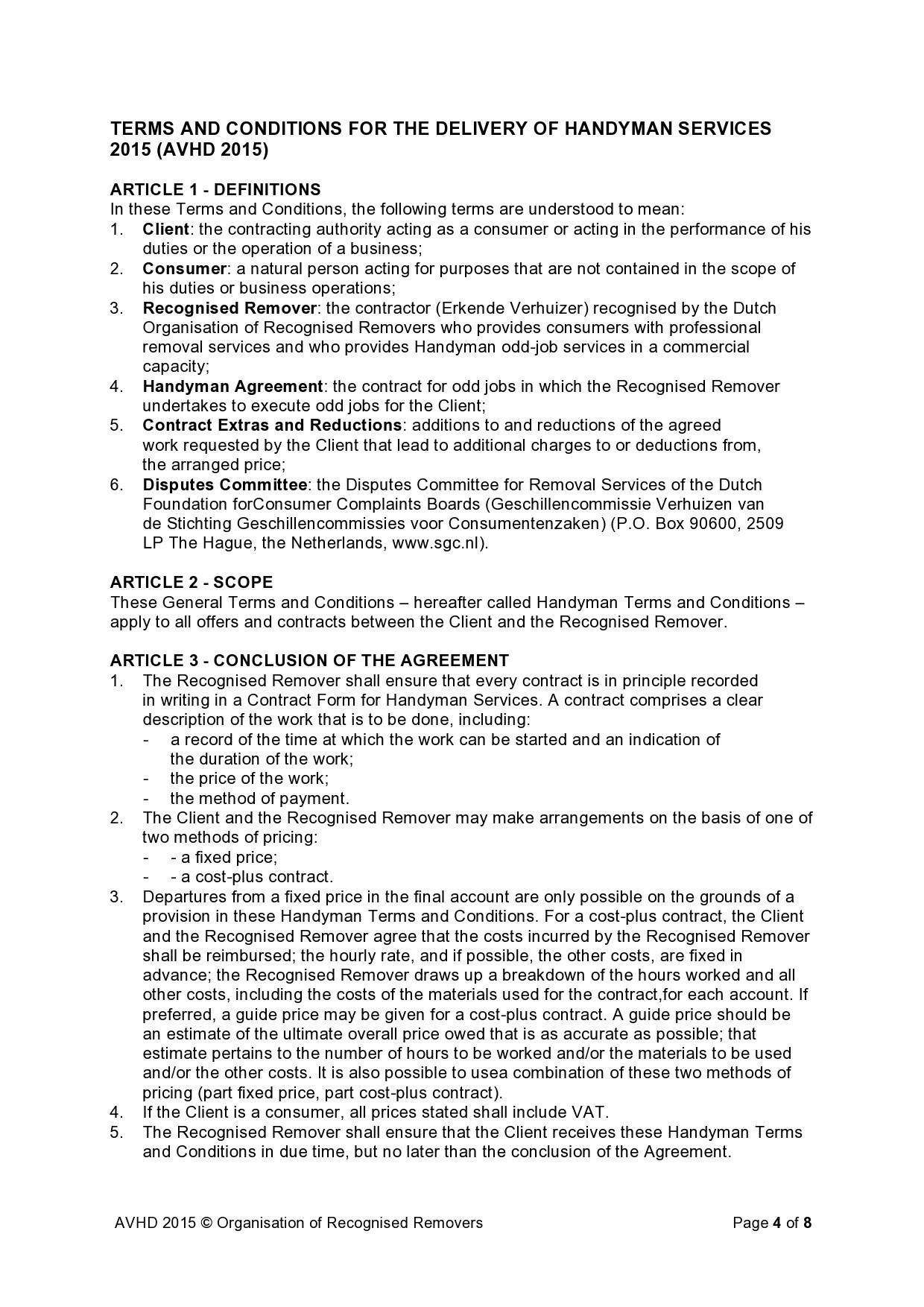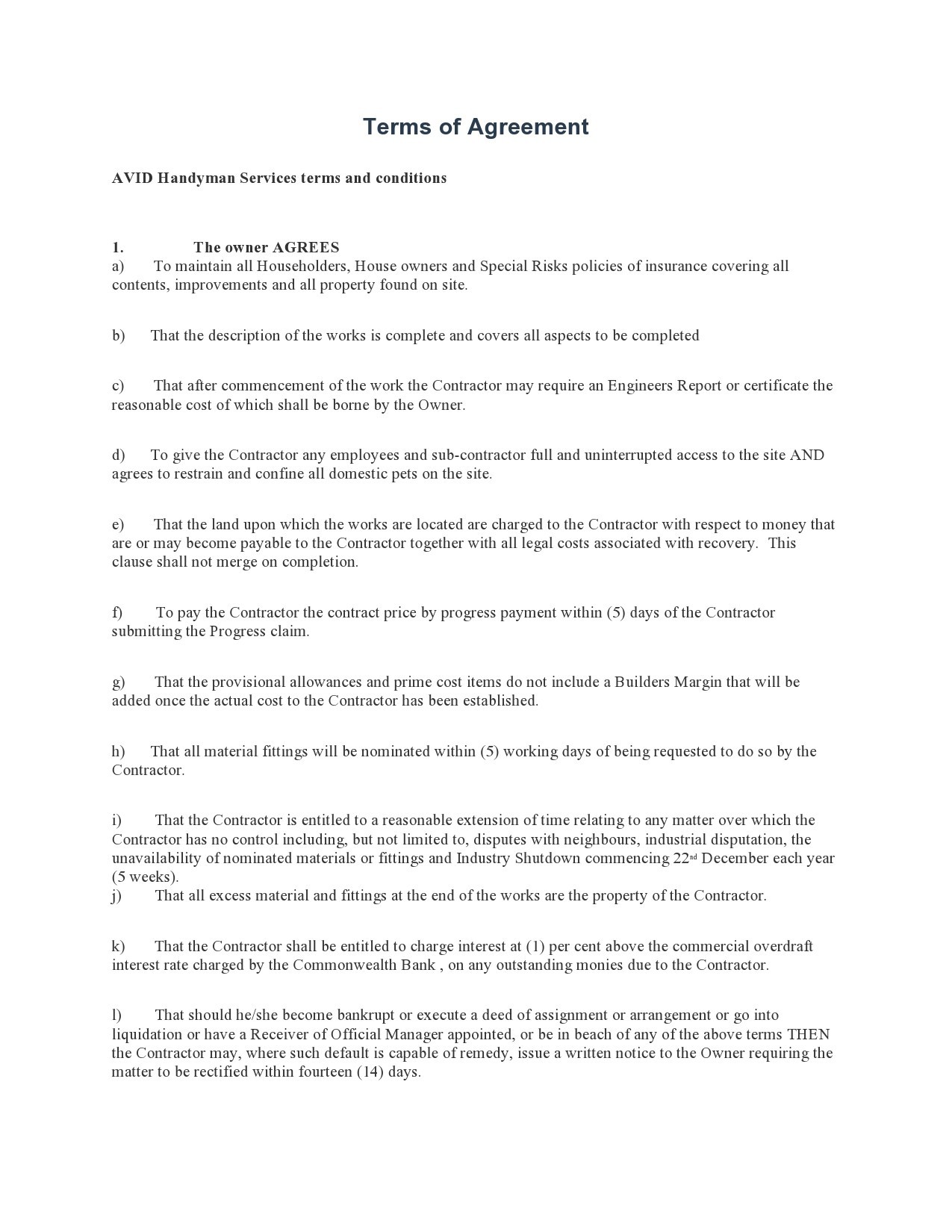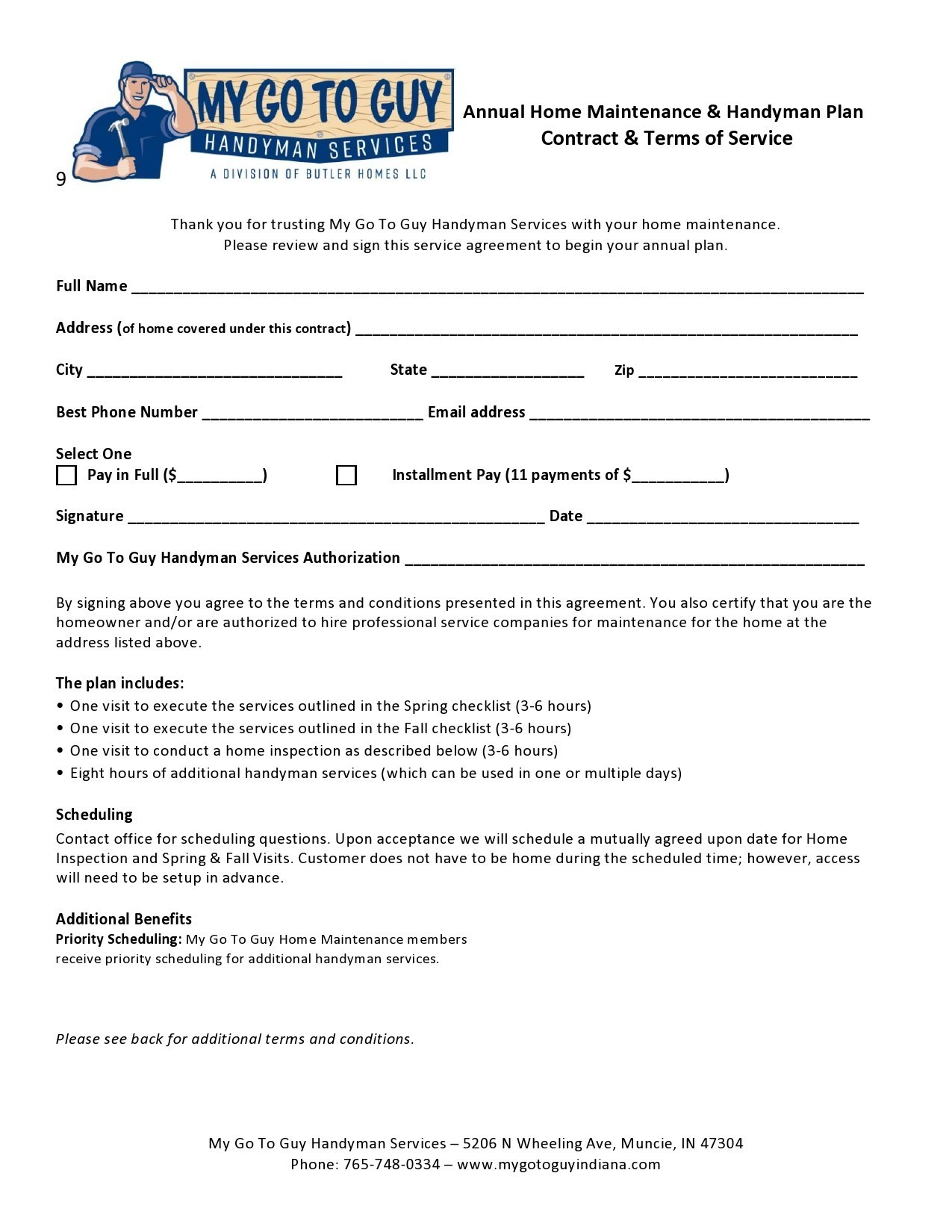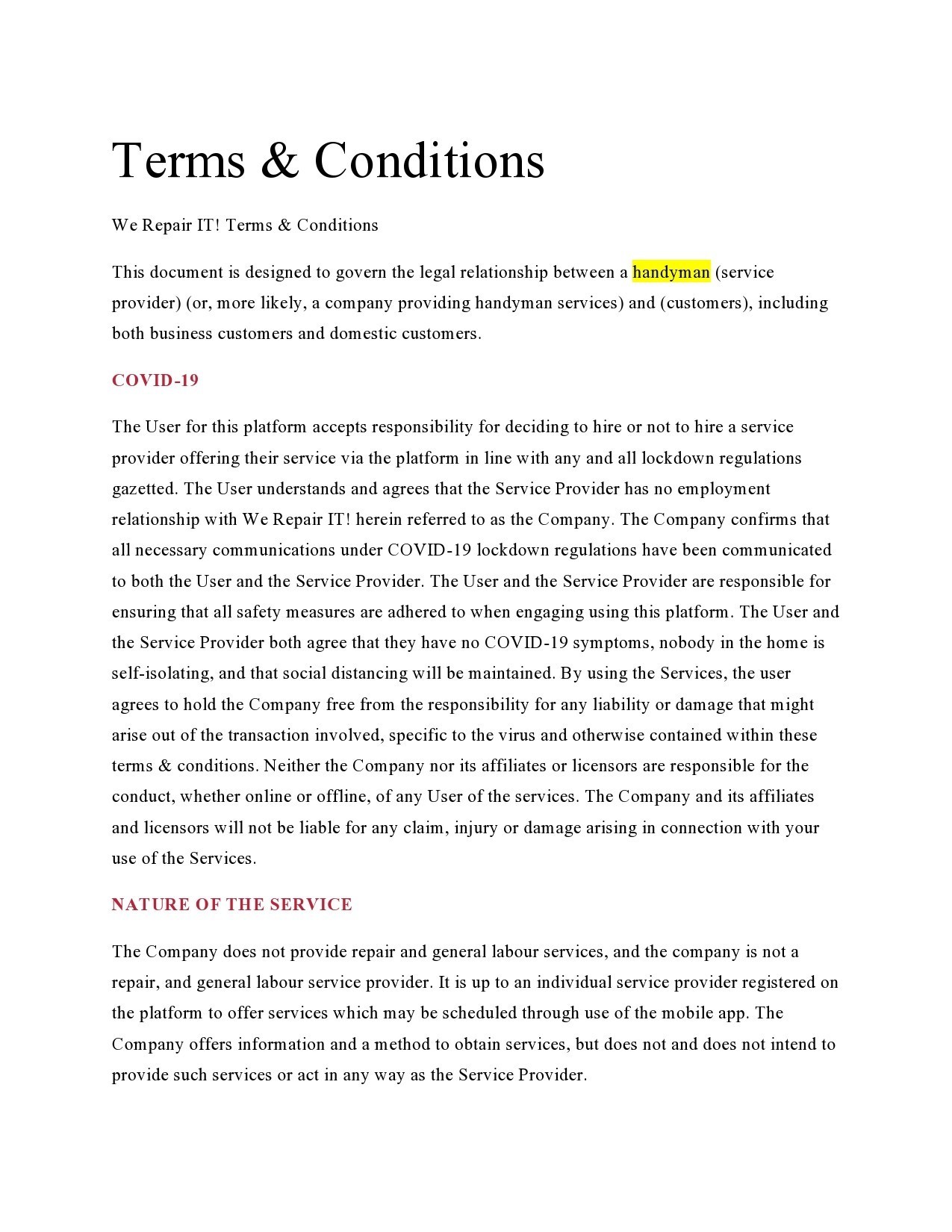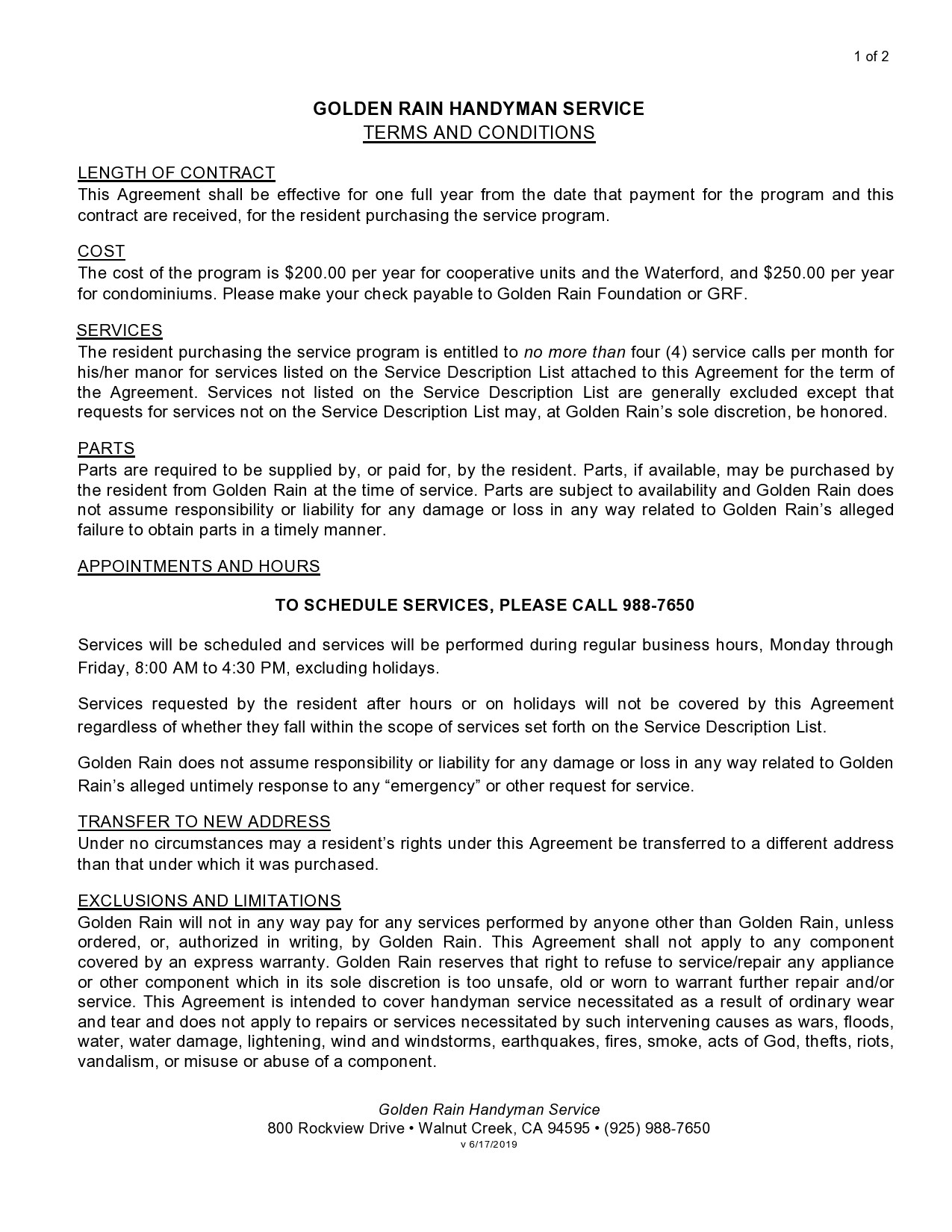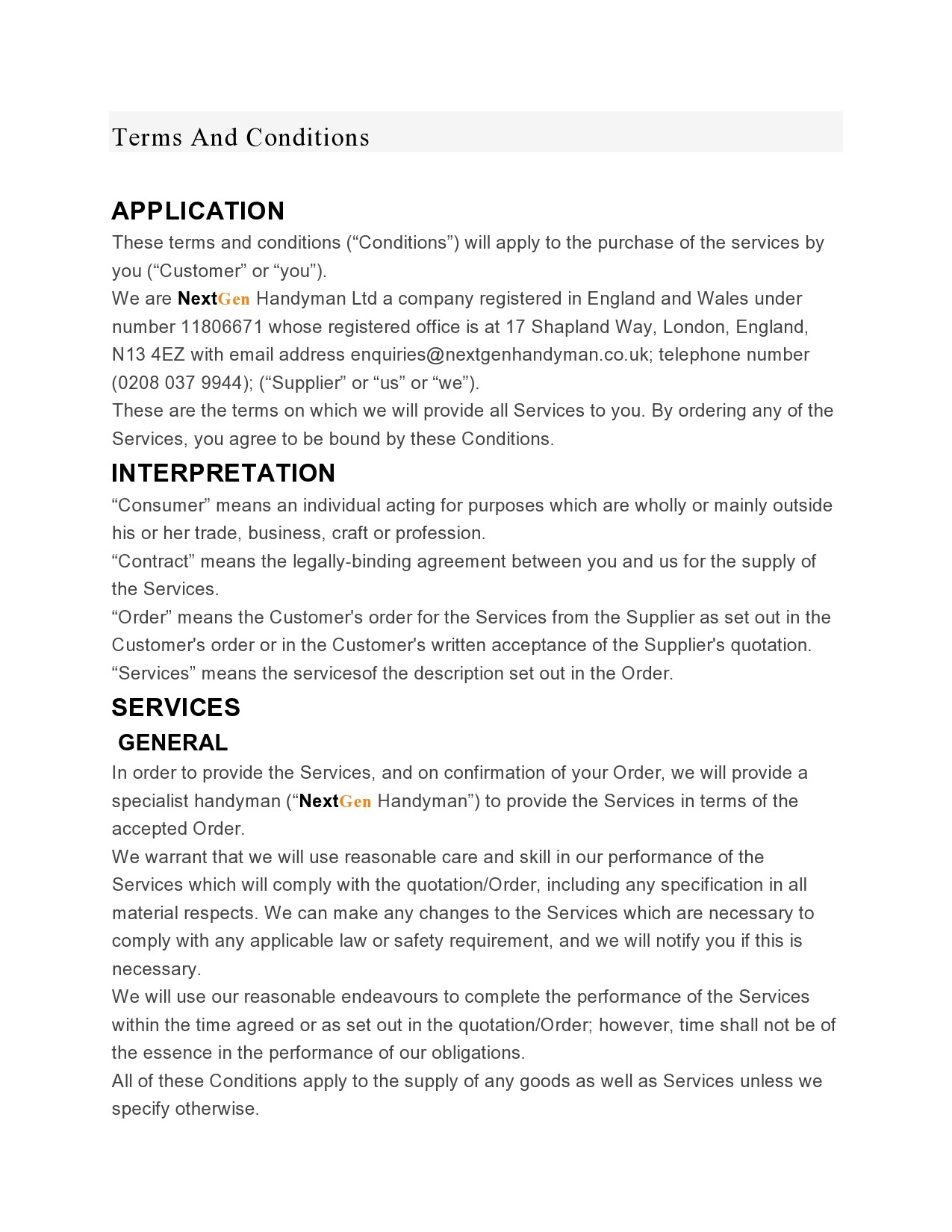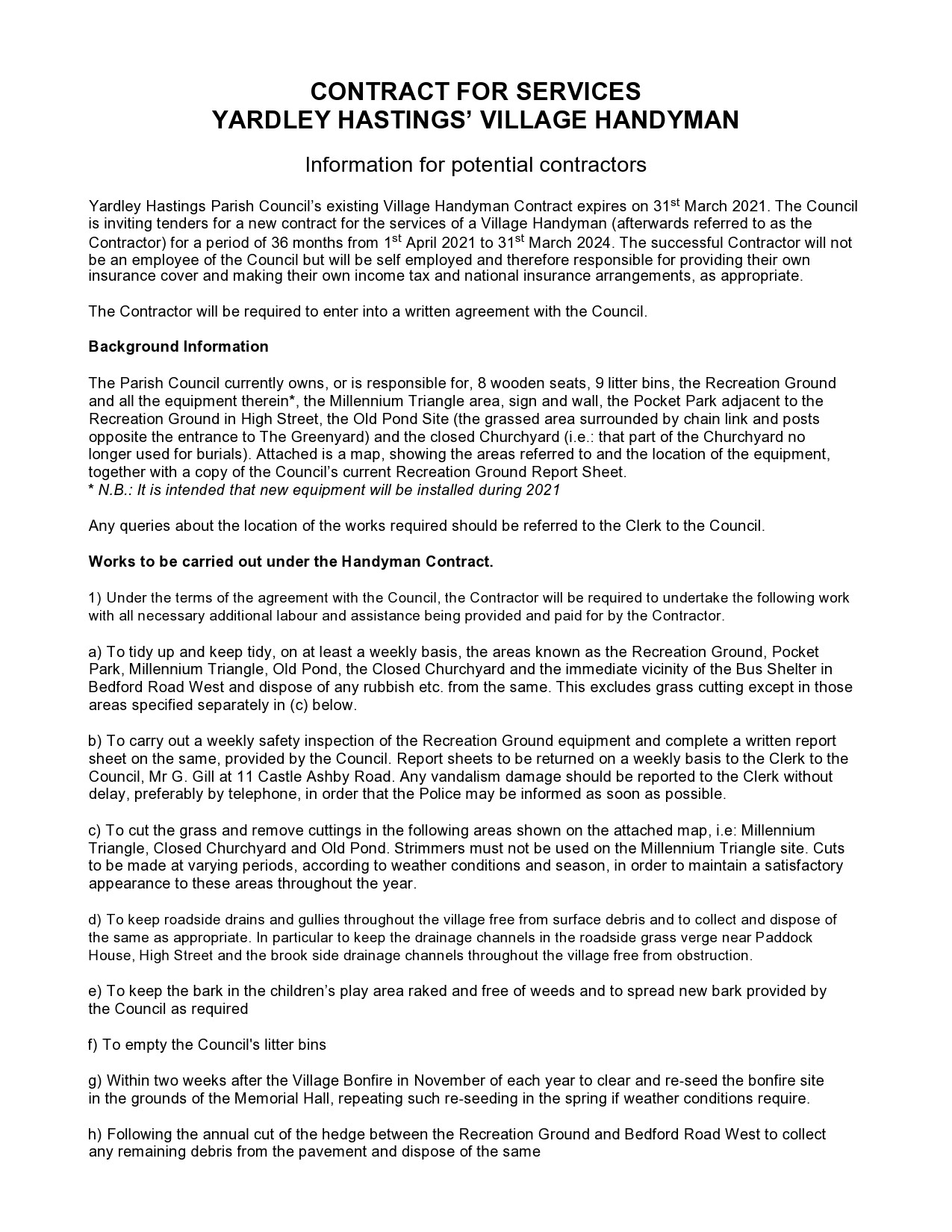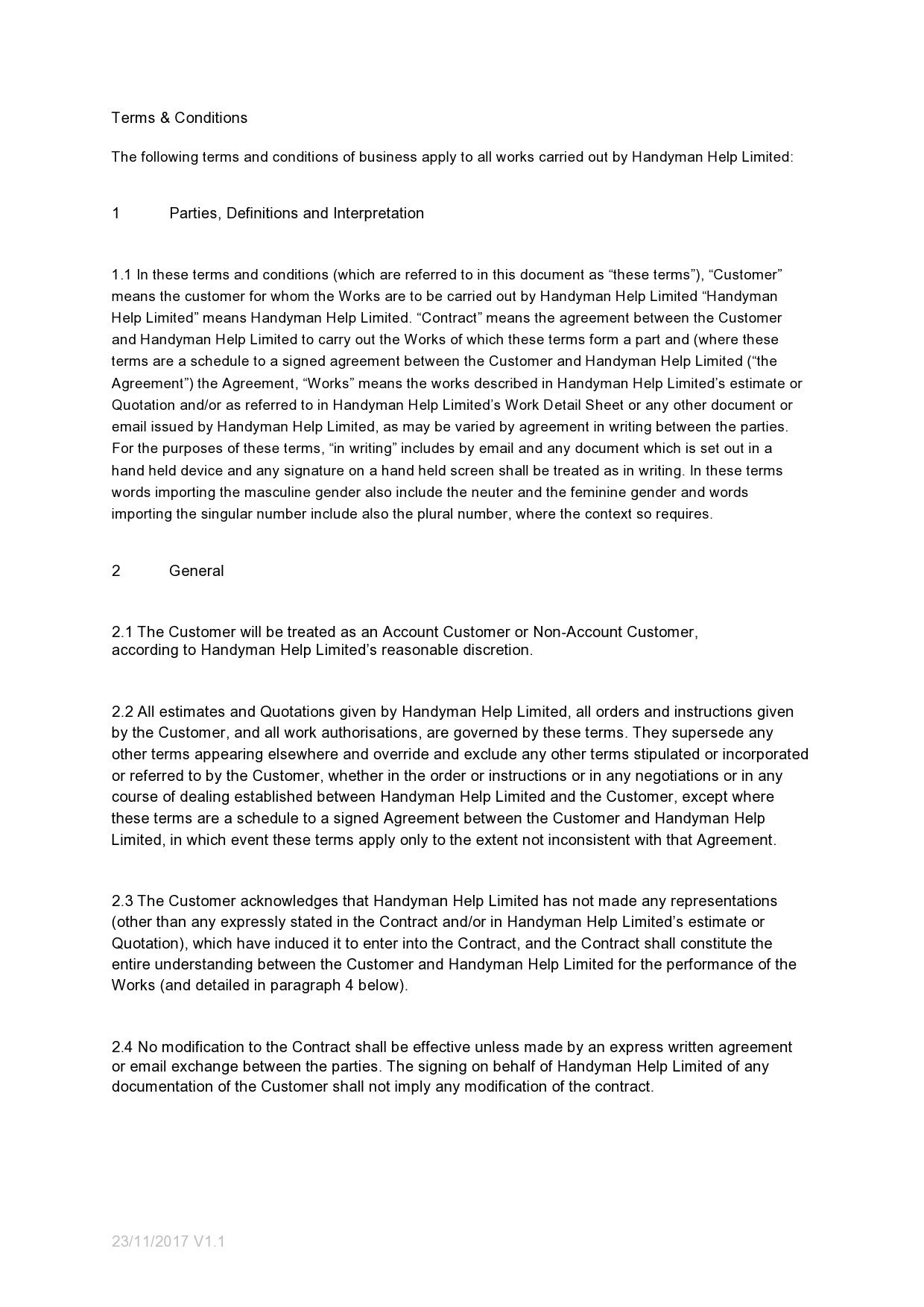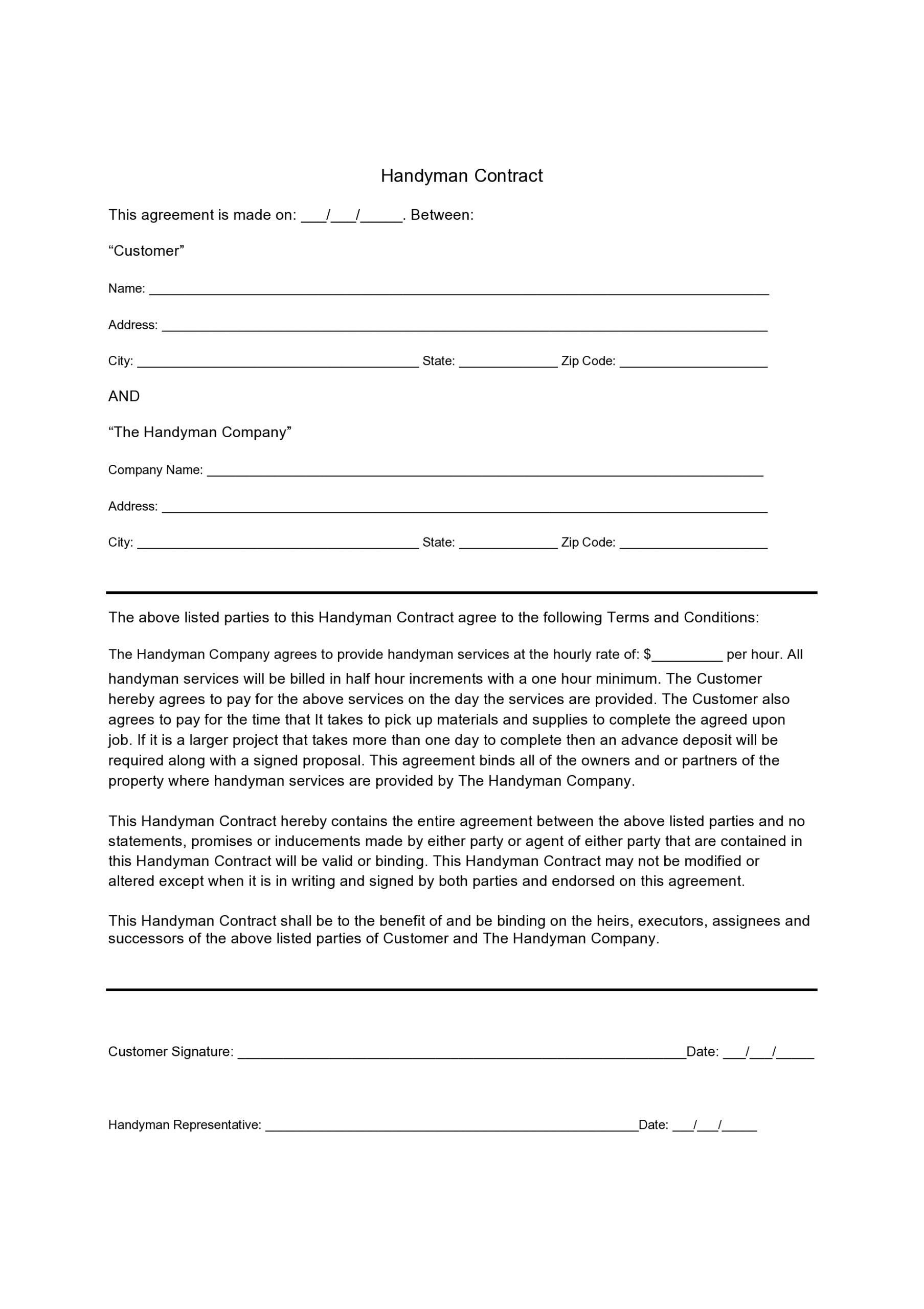A handyman can get contracts to work as a maintenance person in a company. They can be hired by agencies to provide services to homeowners who need handyman’s services. They may also employ themselves and provide services where and when they are needed. Self-employment might need taking a bigger risk but it has its advantages too. Whether a handyman is hired by a company or a homeowner, a handyman service agreement is essential to protect their rights and interests.
Table of Contents
- 1 Handyman Contracts
- 2 What services do the handyman provide?
- 3 Handyman Contract Templates
- 4 Why a handyman needs a handyman service agreement?
- 5 Handyman contract examples?
- 6 Contract For Handyman Services
- 7 What does a handyman contract look like?
- 8 Handyman Contract Examples
- 9 Types of handyman contracts
- 10 Writing a handyman service agreement
Handyman Contracts
What services do the handyman provide?
A handyman provides nearly any repair work service needed in an office or home. You will find them repairing things like:
- Pipework, fumigating the foundation
- Cleaning the gutters
- Minor repairs like a broken pane
- Door hinges
- Cleaning the roof.
- General maintenance work
- General repair works
- Minor construction works
The handyman is multi-skilled which provides them with the advantage of serving a wide range of customers. It is necessary to sign the contract for handyman services with each customer they serve. The simplest way to prepare the contract is to get a handyman contract template online.
Handyman Contract Templates
Why a handyman needs a handyman service agreement?
The contract for handyman services details the scope of the work they are expected to do. It outlines their charges and any additional materials they might require. The document details what is expected from each party.
To avoid disagreements later, the contract for handyman services must be written in a simple, easy-to-understand language. Both the client and the handyman must agree on the information required in the document. There are different reasons why a handyman requires a contract for handyman services.
Traditionally, contracts are carried out under a mutual agreement. The client and the service provider agree verbally. The work is done and the service provider receives their payment as agreed. Some providers still rely on the old, traditional way of awarding contracts which no longer works today.
It is a requirement in most states for a service provider to sign a contract/agreement with a client before service starts. When you sign a contract, you will be obeying the state guidelines in place.
However, it is necessary to confirm with the IRS to understand the existing guidelines. Even when there is a law about contracts, it is important to make sure you have signed a contract for handyman services due to its benefits.
It protects your business: The signed contract is a legal document that protects your business. If the client fails to pay, you can seek help from the court.
It ensures no mistakes are made: A client might want several services. If there is nothing written, it is easy to make mistakes and provide services below or above what the customer wanted. The contract gives details of all the work you are required to do. This way, you will rarely make any mistakes.
Handyman contract examples?
There are different handyman contract examples you can use to guide you in the writing process. The contract includes the following.
Names: The contract must contain the names of both parties.
Scope of work: Define the kind of work the client is expecting. If there is any type of service that the handyman cannot provide, do not include it in the handyman contract template.
Payment terms: The work can be paid before or immediately after completion. What is most important is to define the price and how the payment will be made.
Any other information: Some larger handyman contracts may include insurance, warranty, indemnity, etc.
Signatures: Both parties need to sign the contract to make it legally binding.
Contract For Handyman Services
What does a handyman contract look like?
Different handyman contracts may look different. It depends on the type of service at hand or what the parties want included. The handyman contract template the party chooses can also determine what information is included. A handyman contract will look something like this.
It contains the background information/introduction. The background information includes the following.
Names
These are the manes of both parties, which are broken as follows.
- Name of the handyman
- The handyman’s address
- Date when the contract starts
- Name of the customer
- Address of the customer (email, telephone, postal, physical address if necessary)
Scope of work
The scope of work provides details of what is expected from the handyman. The scope of work should not be given in a general term but details such as:
- Fumigate the foundation with chemical X for termite and other insect control
- Remove the door hinges and replace them with new ones
- Paint the exteriors of the walls. Use white vinyl paint for undercoat and latex gloss paint for outdoor painting.
- Demolish the shelving unit and build a new one with mahogany wood
- Remove trash from the gutters
- Buy a 3mm pane measuring 3ft x 2ft for fixing the broken bedroom window pane.
This is how detailed the scope of work should be. They help you make sure you buy the exact materials the customer wants. Some products like paints are very sensitive. If the paint shade differs the slightest from the rest of the house, the customer will reject the entire work. If you buy a 2mm window pane instead of 3mm, there will be no uniformity. The scope of work section carries the biggest weight of the contract.
Contract price
You may charge the work per service or for all the services. Make sure that you write the price breakdown in detail. You may indicate the down payment amount and when the balance will be paid. Within this section, include a clause that describes what happens if the client delays payment.
You may indicate there will be a penalty of 5% or whatever amount you may want to include. You may prefer to receive your payment in hard cash, bank transfer, or check. Be specific if there is a specific way you prefer to be paid.
Contract modification
A handyman service agreement can be modified, but there must be an agreed way to do it. The scope may change when the work is ongoing. Before you handle any extra work, talk with your client so that both of you can modify the contract first. When writing the handyman service agreement, including a clause that guides you on what to do when there is the need to make changes is necessary. Define the extra fee applicable after contract modification.
Resolving differences
Differences are bound to arise when two parties enter into a contract. Unfortunately, they break relationships which can affect your relationship with many other clients. Some disputes are easy to solve if the two parties agree to sit and talk. If it becomes too difficult to solve the disputes, the two parties may seek an arbitrator or go to court.
Liabilities
Mostly, a handyman’s work should be insured due to any liabilities that may arise. The liabilities can be due to injuries or property damage. You may attach a copy of your insurance certificate to show what it covers.
Signatures
At the bottom of the handyman contract template, create space where both parties will sign.
Handyman Contract Examples
Types of handyman contracts
The type of contract a handyman signs depends on the type of services they are providing.
Appliances repair handyman service agreement
Home appliances require repairs from time to time. Instead of buying a new appliance, the homeowner can save money if they choose to repair it. Appliances repair is one of the commonest types of services offered by a handyman. The contract contains details of what is needed to be repaired, like part replacements. The agreement provides details of the cost of repair, parts purchase, and the dates.
Painting contracts
Painting may contain a wider scope of services. The handyman might be painting both the interiors and exteriors of the house. Before painting, they need to remove the old paint, clean the surface, and begin the painting work.
The contract gives details of the specific paint to be bought, quantity, and cost. They may be required to remove furniture and wall fixtures and cover the floor to avoid contact with spilling paint. These costs must be included plus the cost items such as:
- Paint rollers
- Ladders
- Furniture covers
- Drop cloths
- Tapes
- Brushes
- Sandpapers etc.
The cost should be broken down so that the customer gets a clear picture of what they are paying for.
Installation of a wallboard
Sometimes wallboard (also called drywall) can be damaged by water. The homeowner might want to do a home remodel. A handyman provides drywall installation services as requested by the client.
They require equipment for measuring, cutting, and installing wallboard. The handyman must have the skills required for this type of service. The contract contains details for the type of wallboard, such as color, texture, quality, etc.
Door and window repairs
Most handymen provide services for windows and doors repairs. The scope of work can range from:
- Cleaning
- Removing broken panes
- Panes replacement
- Hinge repairs
- Window frame replacement
- Entire window replacement, etc.
These types of contracts for handyman services are not labor or cost-intensive. Most of the work can be completed within a few hours. No matter how small the contract might be, the handyman should ensure they sign a contract.
Replacement of fixtures
Home or office fixtures wear out or break over time. The owners might be too busy and lack time for DIY replacements. They hire a handyman to help with replacing the fixtures. Such replacements don’t require licensed experts or interior design contractors who might charge higher costs. The handyman signs a handyman service agreement to replace fixtures like:
- The lighting system
- Cabinets
- Kitchen faucets, etc.
They require some level of skills to be able to replace some of the fixtures like the lighting system.
Tiles replacement or installation
Some general handymen perform the tasks of tile replacement or installation. The service can range from replacing a few broken tiles to replacing an entire floor. The property owner could be performing a new installation of tiles. The handyman who signs a contract for this task requires to have skills for the task.
They must first agree with the client on the type of tiles to be installed like ceramic, marble, porcelain, granite, etc. Tile replacement can also be done outdoors on the driveways, backyards, gazebo, garden walkways, etc.
Smart home installations
Another type of handyman service agreement is the installation of a smart home or upgrade. The handyman who signs this type of contract requires a high level of skills. Before a homeowner signs a contract with a handyman for this contract, it is necessary that they check if they are licensed for the work. The handyman requires to be an expert in home electrical systems. The installations may include home security sensors, thermostats, doorbells, etc.
Power washing
Power washing involves the use of a powerful machine to spray water during the cleaning of:
- House roof
- Driveway
- Garage floor
- Sidewalk
- Exterior walls
The handyman who signs this type of contract requirements to have the right equipment for the task. Their main equipment is a powerful water compressor for spraying.
Writing a handyman service agreement
To write a handyman agreement, you need to get a handyman contract template online. You may use handyman contract examples as your guide when writing. You may use your logo if you wish.
To start, write the names of the involved parties (the handyman and the client).
Write the detailed terms and conditions of the contract.: That is – the works and agreements. It can read something like: The contractor agrees to carry out all works indicated as 1,2,3… within the agreed period.
Period: Provide details for the duration of works, starting date, completion date, extension allowances, and conditions for an extension.
Contract variations: Both the client and the handyman may have the right to vary the contract when it’s ongoing. Give details for the conditions of variation by any party.
Subcontracting: The client may allow the handyman to subcontract if the need arises. If they are not allowed to subcontract, they should not do so.
Materials: Provide details of all the materials that shall be used.
Termination: If there is a need to terminate the contract, provide details on how it must be done.
Signatures: Let both parties sign the handyman contract.

